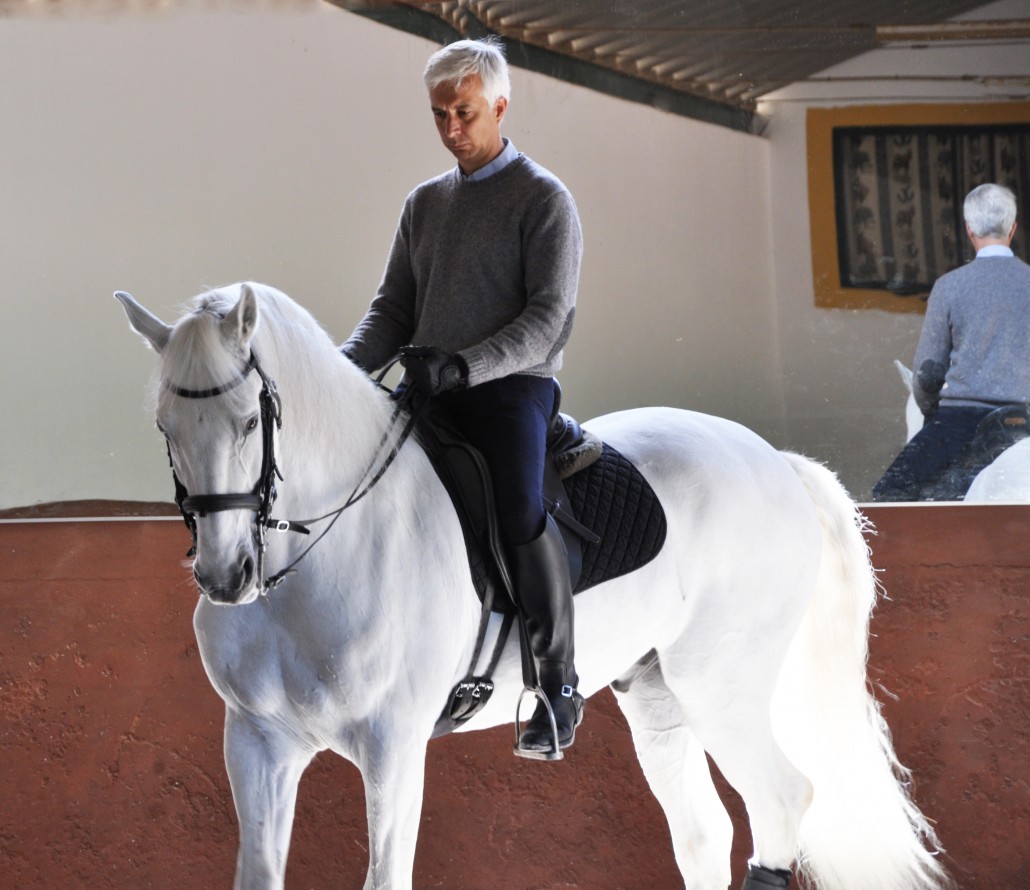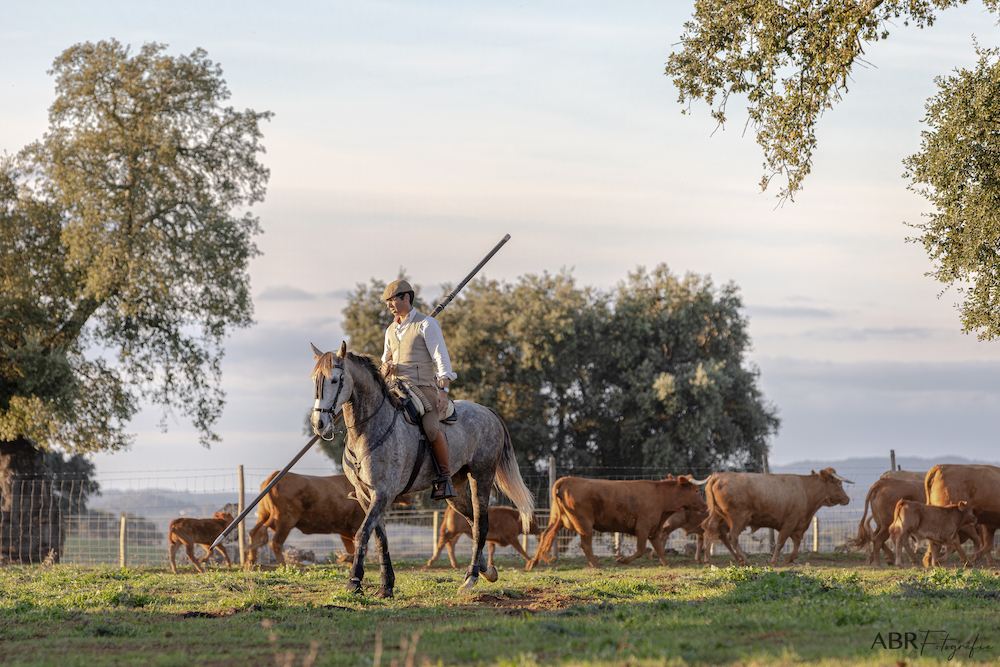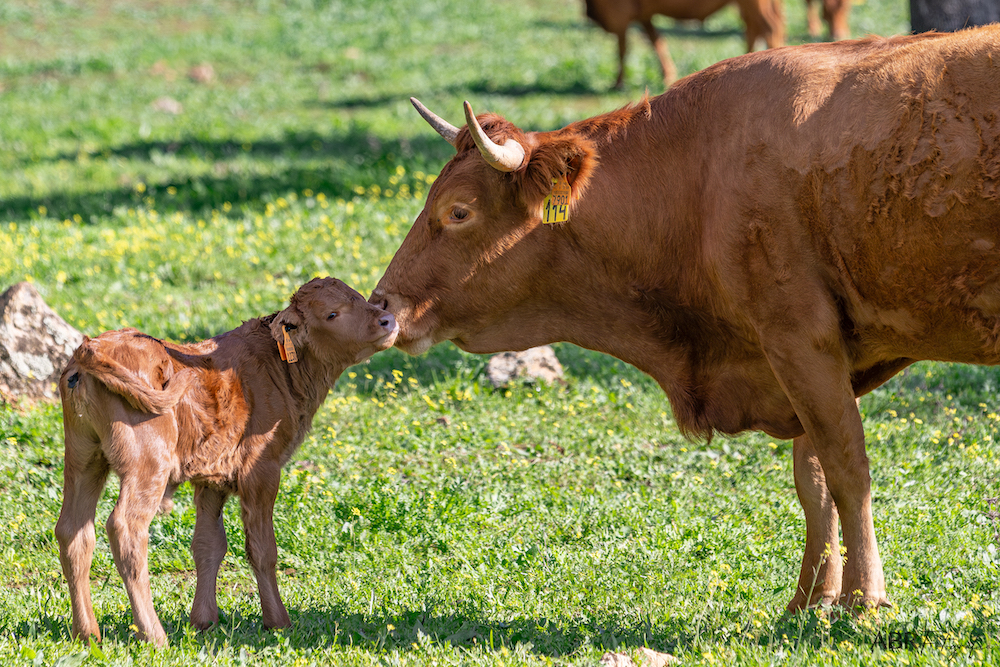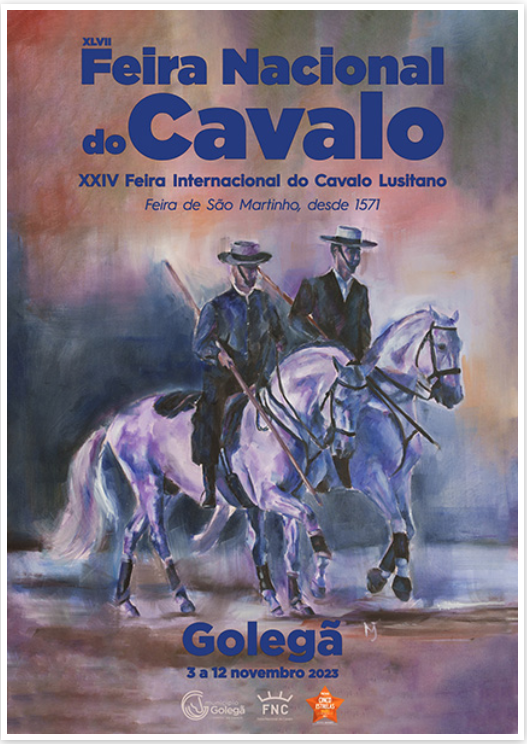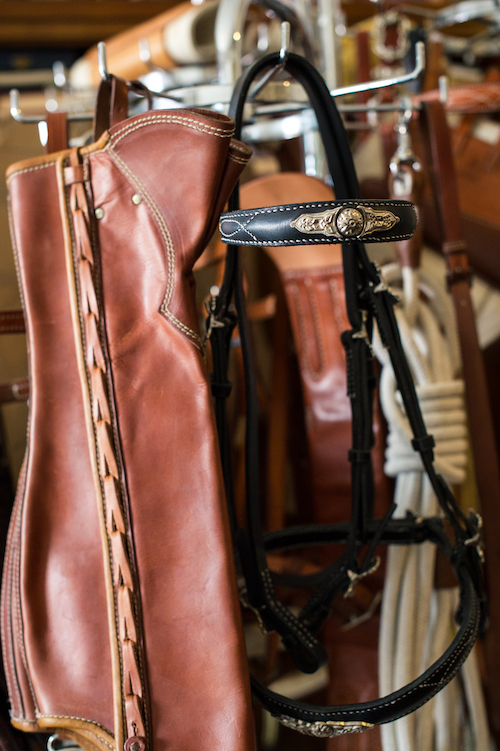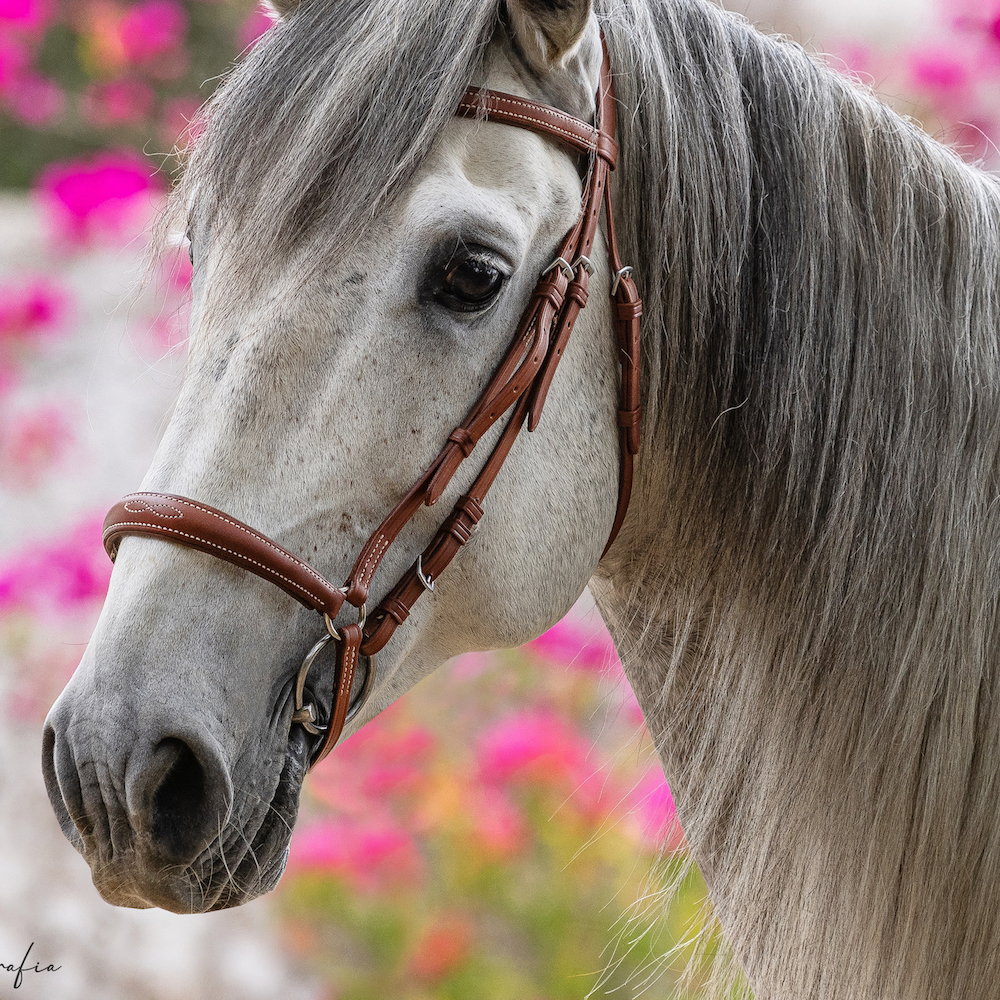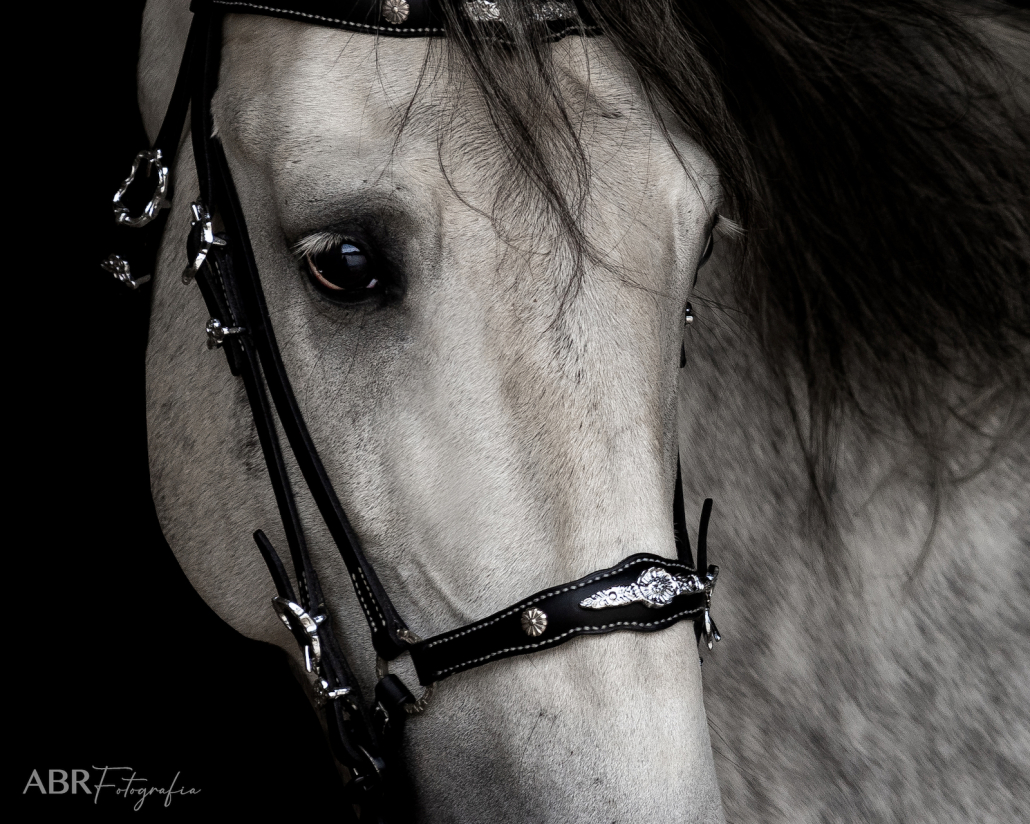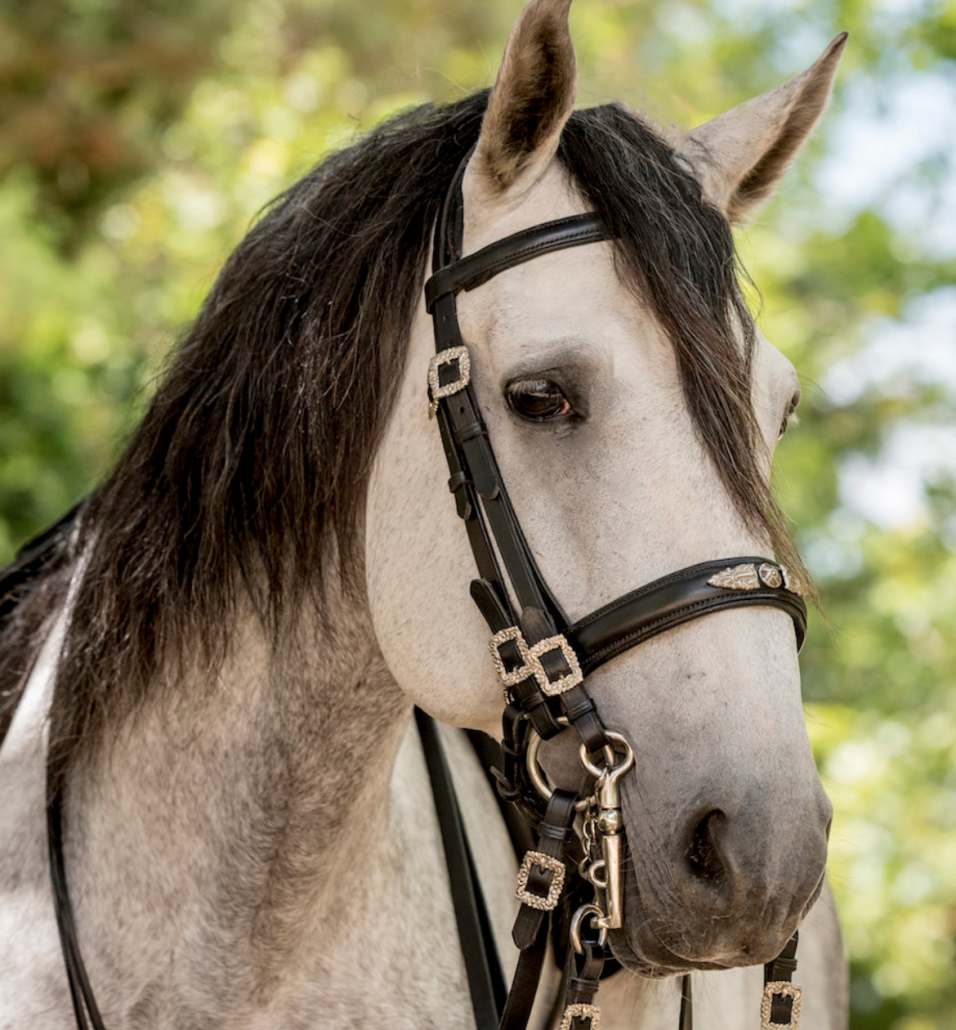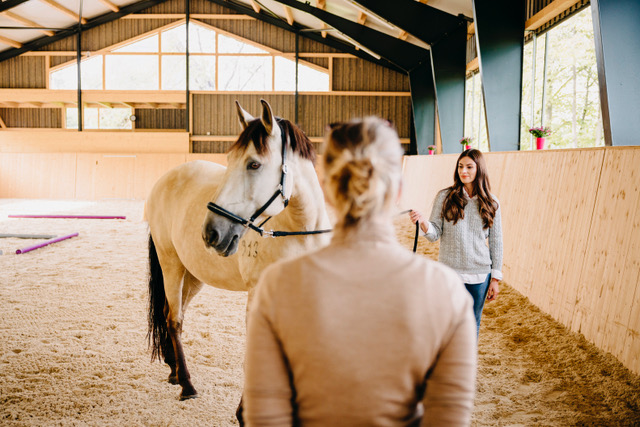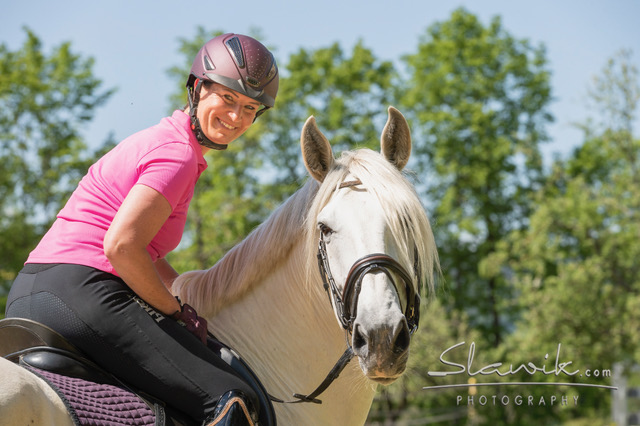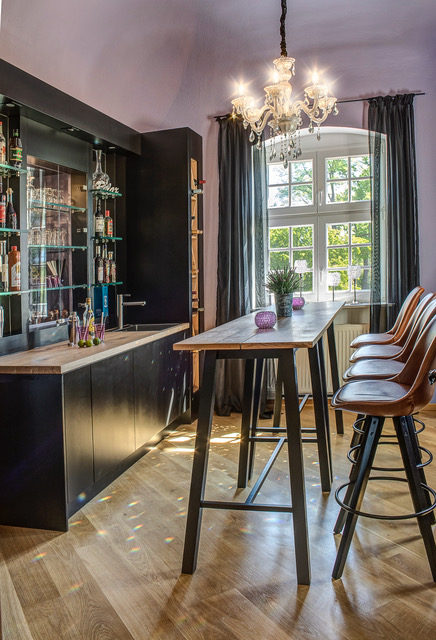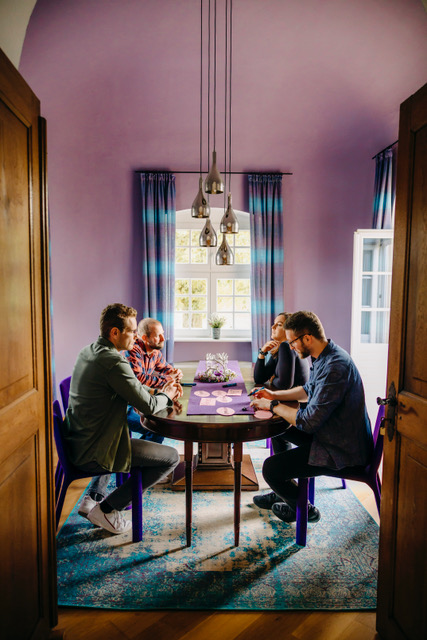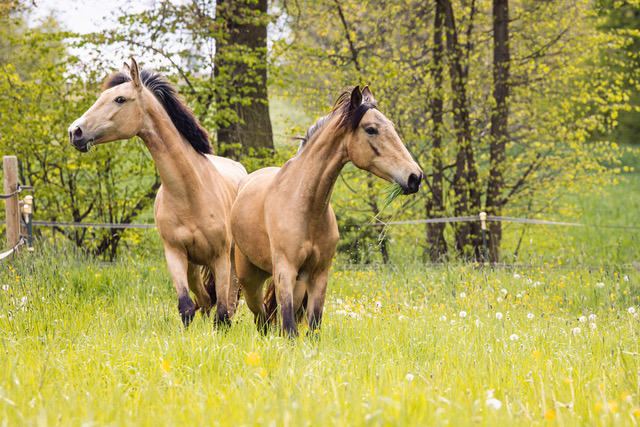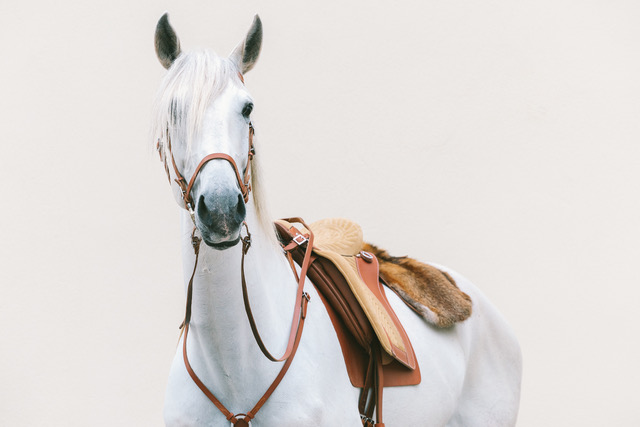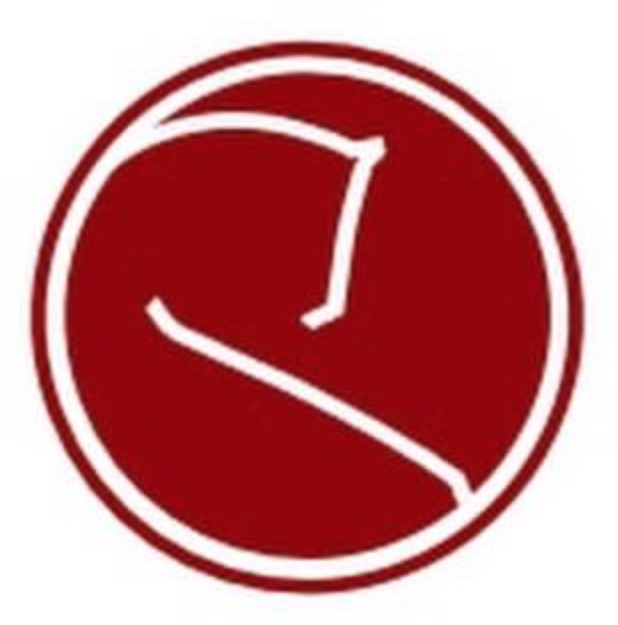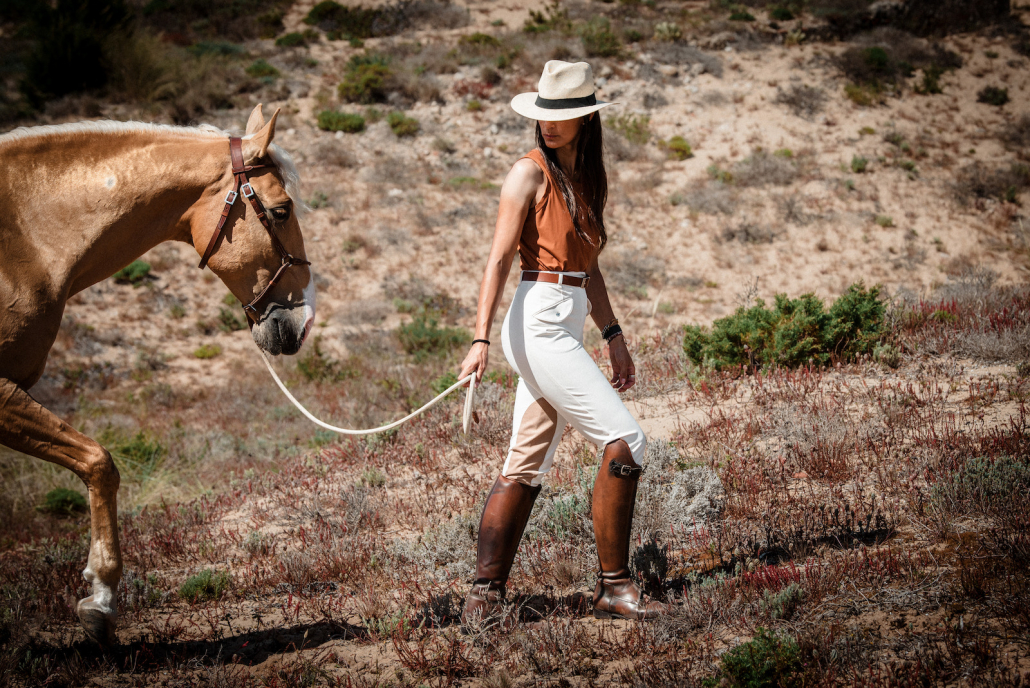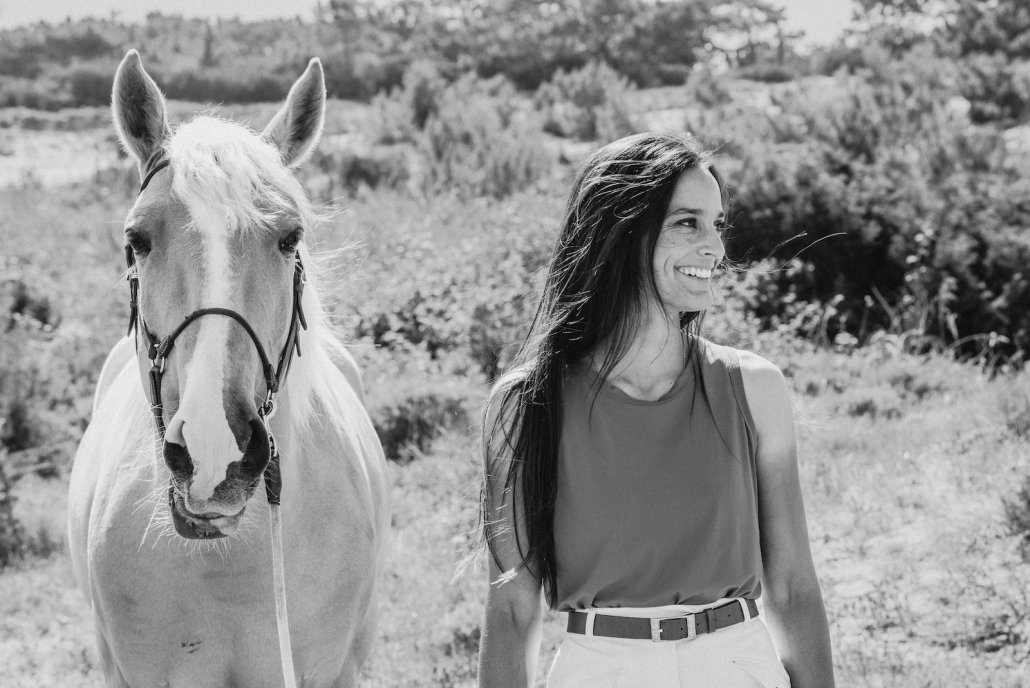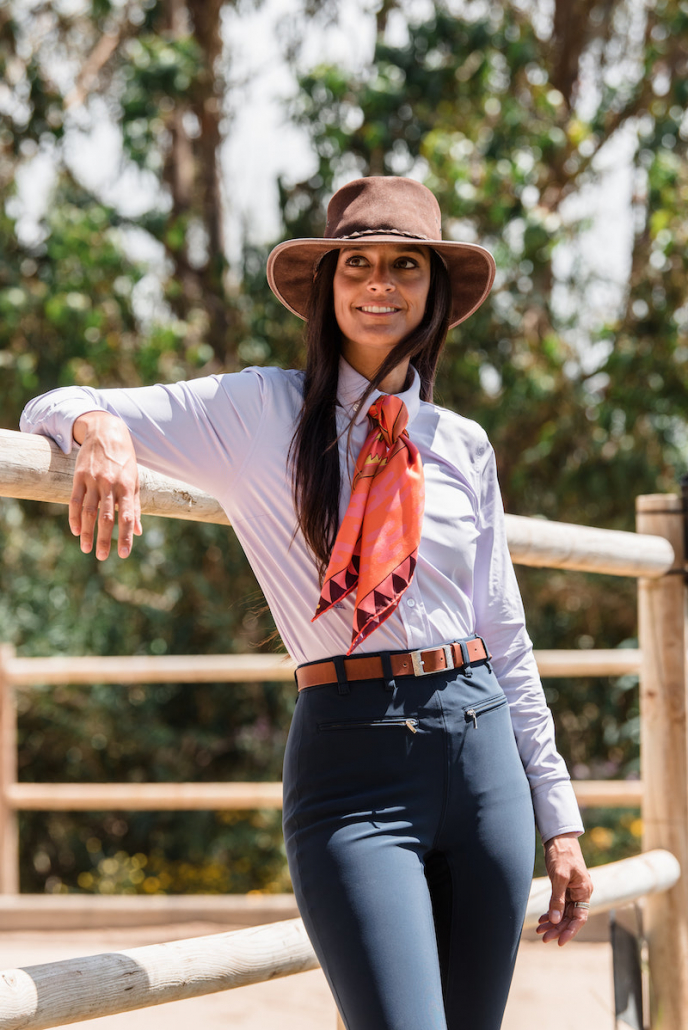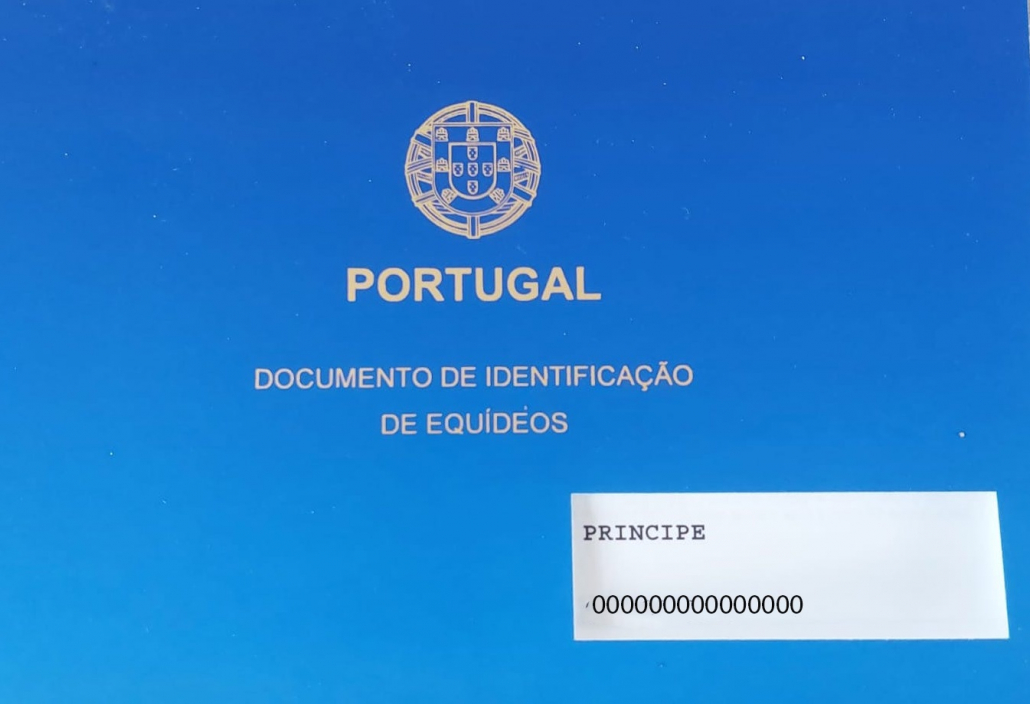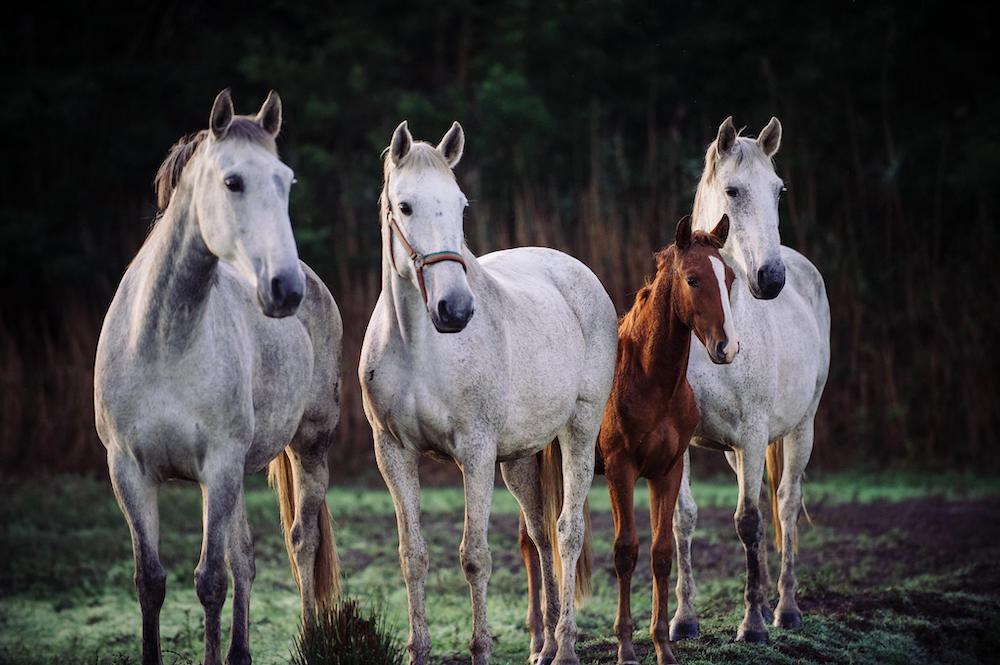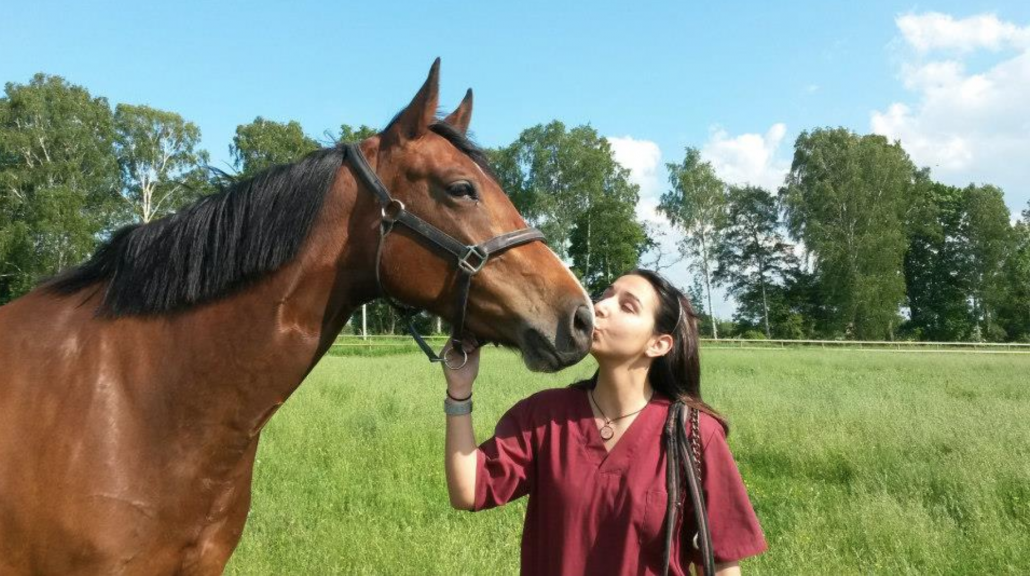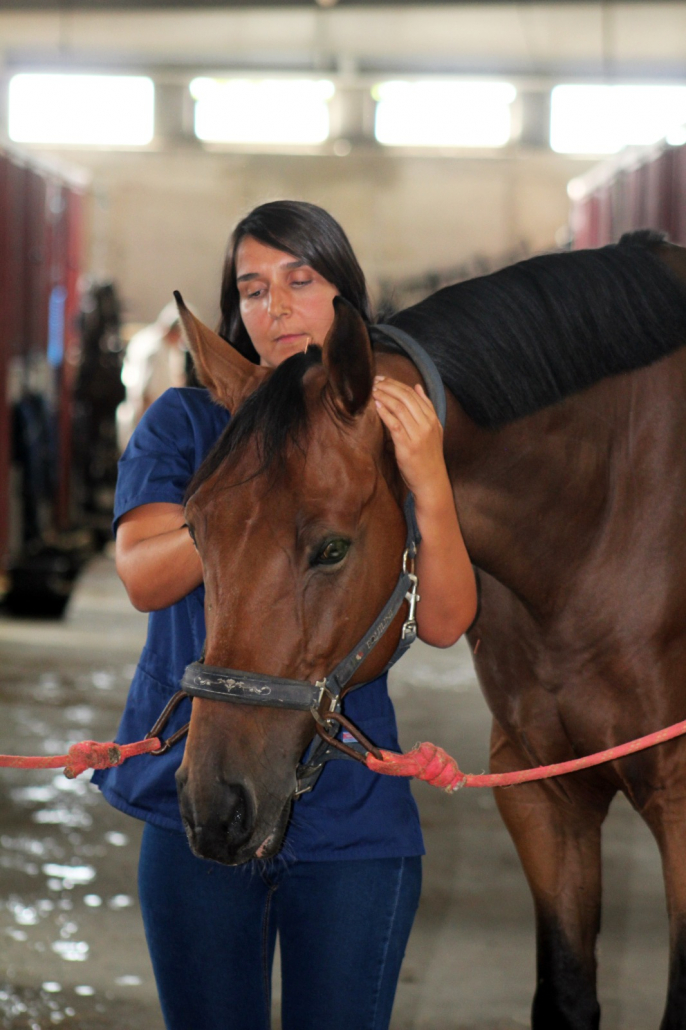Mindfulness – Be More Present with Your Horse
/in Blog, Articles, Portuguese Equestrian Heritage, Classical Equitation, Equestrian Holiday Locations, Equestrian life in Portugal, Uncategorised, Frontpage Article/by Teresa BurtonBE A MORE MINDFUL EQUESTRIAN
A seemingly neglected yet important key step in achieving a better life is to become aware of and harness the beauty and value that the present moment holds.
Image of Nuno Cavaco by Teresa Burton
Although Equestrian Mindfulness is not confined to the classical equestrian teachings It is something that the Great masters avocated as essential in the art of riding. Without a mindfulness practice how can you really achieve the finest dance with your equine partner. How can you explore and know the best ways to communicate with each other.
Mindfulness is at the heart of achieving lightness & harmony with your horse.
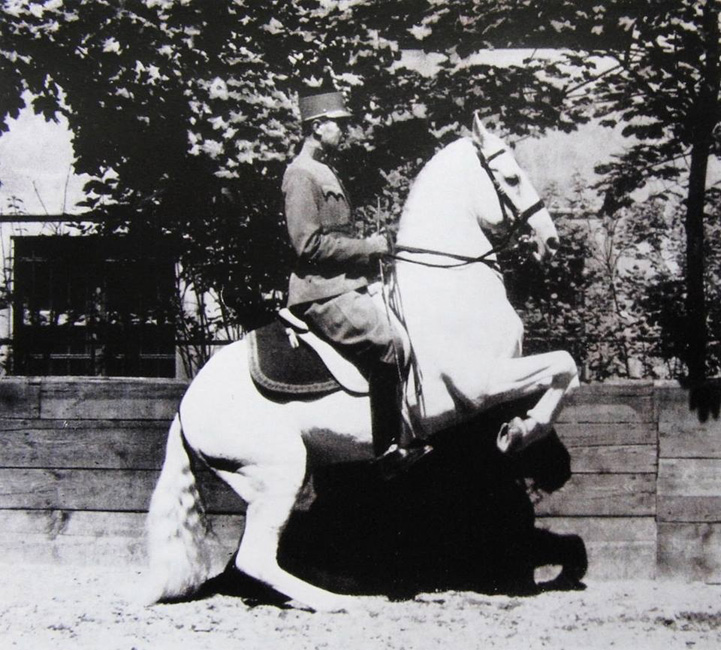
Whether in the arena, on a trail, or grooming, being present keeps you connected to your horse, and safe. But how do we go about staying more in the present moment.
Living in the present moment is not easy to achieve over night, especially if we have spent years/decades switching between being preoccupied in past regrets, stresses and or worries about the future. It requires commitment to change and celebrationing your successes.
The good news is all is not lost – it begins when you make the commitment to change.
Make it you mission to show up fully for you and your horse !
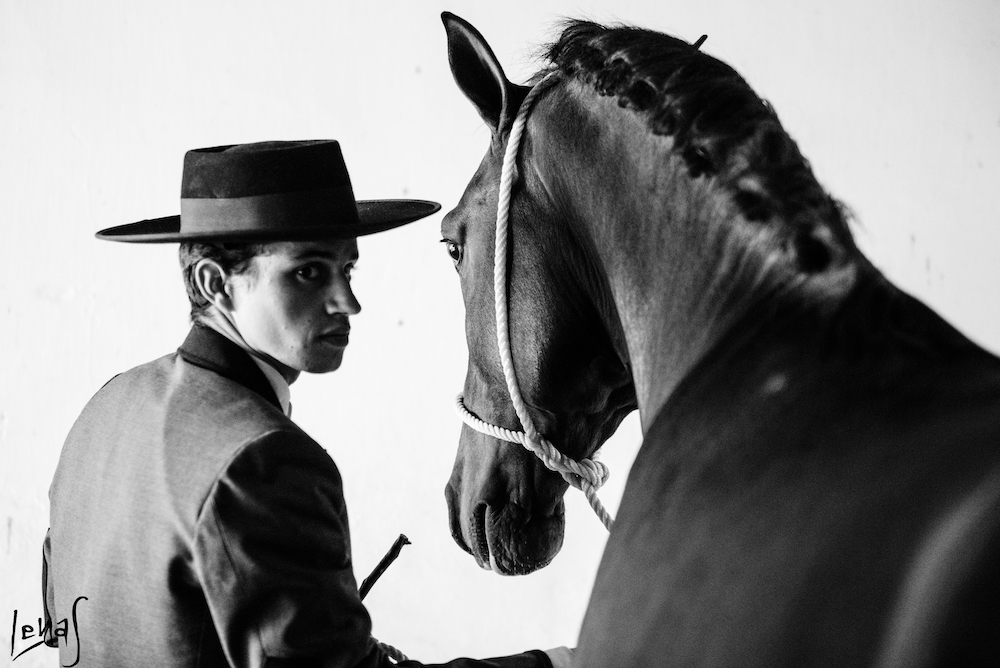
Image by Lena Saugen Coudelaria Vila Vicosa
By implimenting tiny daily steps you will certainly transform, and ultimately it will benefit every area of your life. Gaining mastery of how to be more in the present moment you can open the doors to a happier and freer way of life. It liberates us to live more joyfully.
The key is not expect too much too soon be kind to yourself and celebrate each step.
Strategies to Build a Mindful Daily Practise.
Since we cannot expect to change overnight we need to decide on a daily practise that enables us to develop the skills to be present and aware when we are not.
Here are some techniques you can consider to help you in your transformation. Don´t try to impliment everything, especially all at once. The idea is to choose one or two strategies that resonate with you. Then commit to starting with just a few minutes everyday.
Make it achieveable. 5 minutes first thing in the morning and last thing at night can bring about huge steps if maintained.
Most of these practises cost nothing apart from your time. The benefits are priceless
Breath Work
Breathing It is something so fundamental to our well being and actually being alive. Yet it is shocking just how few people are actually breathing correctly. Breathing incorrectly is linked to so many physical and mental health problems and yet it is still taken for granted by many as not particularly important.
You can transform your health and wellbeing by simply by breathing better.
These days there is plenty of excellent science research showing the benefits of breathing correctly. Become aware of how you breath and consider adopting some breathing exercises.
The benefits include:
- Increases feeling of comfort, calm
- Increases Relaxation
- Increases overall wellbeing and postive self esteem
- Increases alertness and energy
- Boosts Immunity
- Decreases stress and anxiety
- Lowers blood pressure
- Stengthens lungs
- Releases Toxins
- Improves Sleep
- Reduces Depression
- Makes you more present, creative and positive
With all these advantages how you anyone not want to know how the breath better and naturally improve well being and vitality.
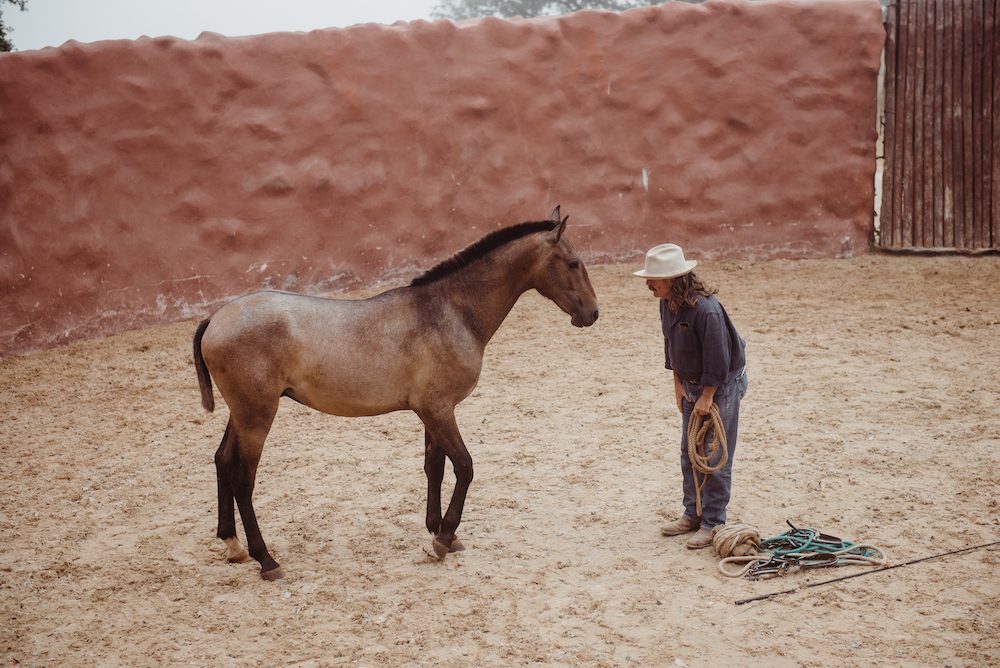
BOX BREATHING
A simple box breathing technique practised by people all over the world even the military forces make a huge difference in calming down and becomming more focussed.
How to box breath
- Step 1: Breathe in, counting to four slowly. Feel the air enter your lungs.
- Step 2: Hold your breath for 4 seconds. Try to avoid inhaling or exhaling for 4 seconds.
- Step 3: Slowly exhale through your mouth for 4 seconds.
- Step 4: Repeat steps 1 to 3 until you feel re-centered.
There are numerous teachers, websites, apps and youtube teachers that you can research to find the best practise for you. Here are a few suggestions, I personally love the Wim Hof Method. However there are many more –
The Wim Hof Method – Breathwork. He has written 2 excellent books.
James Nestor´s book Breath is brilliant and he now has a breathwork course with BBC Maestro
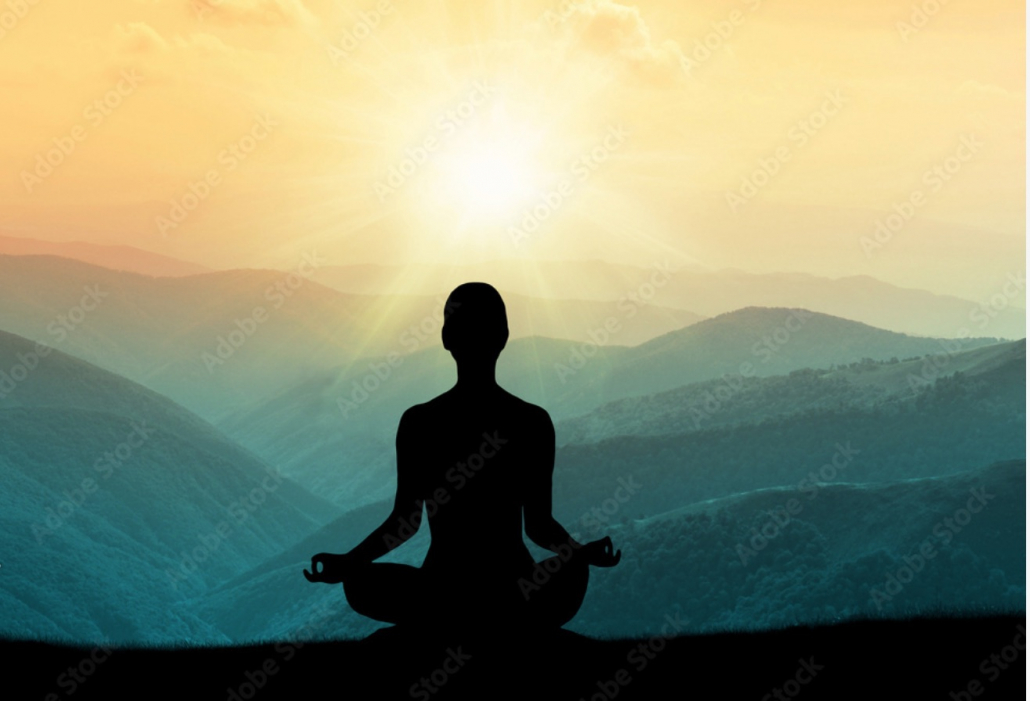
Meditation
Like breathwork the benefits of meditation are not a new discovery in fact meditation has been part of ancient cultures all around the world for centuries. The benefits are much the same as those listed for breathwork. Science is gaining more and more interest in meditation which is really helpful. Now many studies have been published to back up the benefical claims.
There is the research with Dr Joe Dispenza who has written several amazing books. There are many really brilliant meditations on his website.
You don´t have to sit for hours everyday meditating, just a regualr short daily practise will make all the difference. Mornings and evenings are the best times but if that doesn´t work for you find moments during the day. You can find some much infomation about different meditation techniques. Here are a few links that you could look at –
Gaia – Many Meditation Courses
Mind Valley. Amazing website filled with personal develop leaders, courses
APPS – Headspace Meditation app, Calm app, Healthy Mind, Smiling Mind to name but a few.
PODCASTS – Check out the fantastic Dr Rangan Chatterjee He teaches simple effective steps to changing your life, he interviews fastinating people on all aspects of wellbeing and lifestyle. He has also written several really down to earth helpful books.
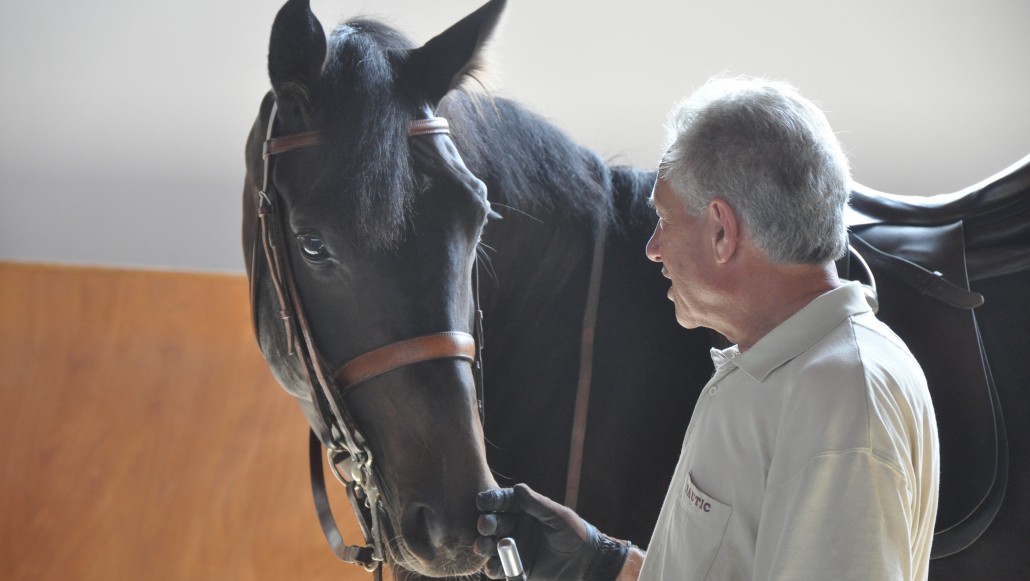
Image of Anton Walliser by Lena Saugenh
THE POWER OF NOW
The Power of Now is a book witten by Eckhart Tolle and definitely worth a read or you can listen to it on audible.
An excellent technique for getting into the moment throughout the day is whenever you remember stop. Focus on an object – a flower, your horse, the back of your hands, the fabric of your jacket, a tree, the sky anything. Look at it, take in everything – the colours, texture, the way the light falls on it, the sound, the smell. Really study it, keep your attention there for 20 seconds gradually build up to a minute or more.
Take in every detail. Doing this brings you into the present moment.
Developing Presence on your Horse
A technique I personally love when I am riding to improve our connection. When I am in a calm quiet environment and my horse is relaxed I let the reins drop to the neck so I am just on the rein buckle. We walk around the arena like this. Then I simply imagine where I want to go and visualise turning onto the centre line or into a circle.
There is a great saying – `where your attention goes your energy flows´
This literally means that even if you are not aware when you direct your attention your energy will follow and your body will move ever so subtly that way. So imagine you focus on the centre line, your energy will direct that way and your horse will feel it however slight. He will follow.
The more you practise this with your horse the greater connection and communication you will achieve together. Of course only practise this when you are in a situation safe for you and others. Give it a go I would love to know how it works for you.
Screen Time verses Nature Time
Image at Emergasol Lusitanos by Lena Saugen
There is no doubt that mobiles have become a hugely dominant factor in our lives. Stats are showing shocking results of the amount of times per day we look at our phones and scroll through social media. Each time we do this there is an energetic cost. Mobile phones are fantastic assets to our lives as long as they are not comprising positive healthy communication with others and our animals.
Try leaving your phone in your bag when you are with your horses. Give them your undivided attention you will both benefit from this.
Journaling
Writing in a daily journal can be very empowering. It helps to release things stuck in your mind, unravel problems you are repeating over and over. It is can also enable you to discover what your goals are and ideas to achieve them.
It can be a pathway to becoming more self aware and confident. Discover goals and dreams. You can also workout problems in relations with others for instance if you are trying to resolve some bad feelings, upset and conflict with another.
Try writing down all the things you love or like aboit them, all the great things they have done, write what you are grateful for about them. This process will help you to release and forgive and love.
If you think daily journaling is for you make it special buy a really nice book and pen. Choose a great place to do it and allow yourself to just flow without censor or limitations. This is your licence to be totally creative, inspired and emotionally releasing.
Gratitude
It seems like something silly to say that gratitude will put you in the present moment and how does it benefit us. Well there are now studies showing the power of having a gratitude practise is transformative. How does it work?
What is Gratitude – Its Meaning & Definition
Gratitude is an emotion similar to appreciation. The American Psychological Association (n.d.) more specifically defines this phenomenon as a sense of happiness and thankfulness in response to a fortunate happenstance or tangible gift.
Gratitude is both a state and a trait (Jans-Beken et al., 2020). Better explained, one can experience gratitude for someone or something at a certain moment in time, and someone experience gratitude more long-term as a positive character trait.
First comes the acknowledgment of goodness in one’s life. In a state of gratitude, we say yes to life. We affirm that, all in all, life is good and has elements that make it worth living. The acknowledgment that we have received something gratifies us, both by its presence and by the effort the giver put into choosing it.
Second, gratitude is recognizing that sources of this goodness lie outside the self. One can be grateful to our creator, other people, animals, and the world, but not to oneself. At this stage, we recognize the goodness in our lives and who to thank for it.
The two stages of gratitude comprise the recognition of the goodness in our lives and then how this goodness came to us. Through this process, we recognize the fortune of everything that improves our lives and ourselves.
Further, gratitude can be considered either a dispositional trait or a state of being.
As a trait, an individual practices gratitude as part of their daily life (McCullough et al., 2002), and it is considered a character strength. It is important to remember that gratitude is a strength that can be enhanced with awareness and practice.
When a person experiences the emotion from someone expressing gratitude for them, it is referred to as a state (Watkins et al., 2009).
Source www.positivepsychology.com According to Dr. Robert Emmons, the feeling of gratitude involves two stages (Emmons & McCullough, 2003)
Find ways to give gratitude everyday to grow your inner strength and wellbeing.
Visualisation
There is enormous value in spending time appreciating and enjoying the present moment, you can also add to your happiness by visualising your future self.
Develop and focus on the feelings associated with the successful completion of your goals and creating the outcome you most desire. Think about the traits you’ll exhibit when you have the life you choose to create. Now bring those traits into your present being.
This is where you can be proud of the steps you’ve taken so far, because what you’re learning now shapes your future, so approach each day filled with the positive intention to be happy that you are where you are, doing what you can to create the future, life and version of yourself you want and express gratitude that you can.
Tell your horse how grateful you are to have him or her in your life
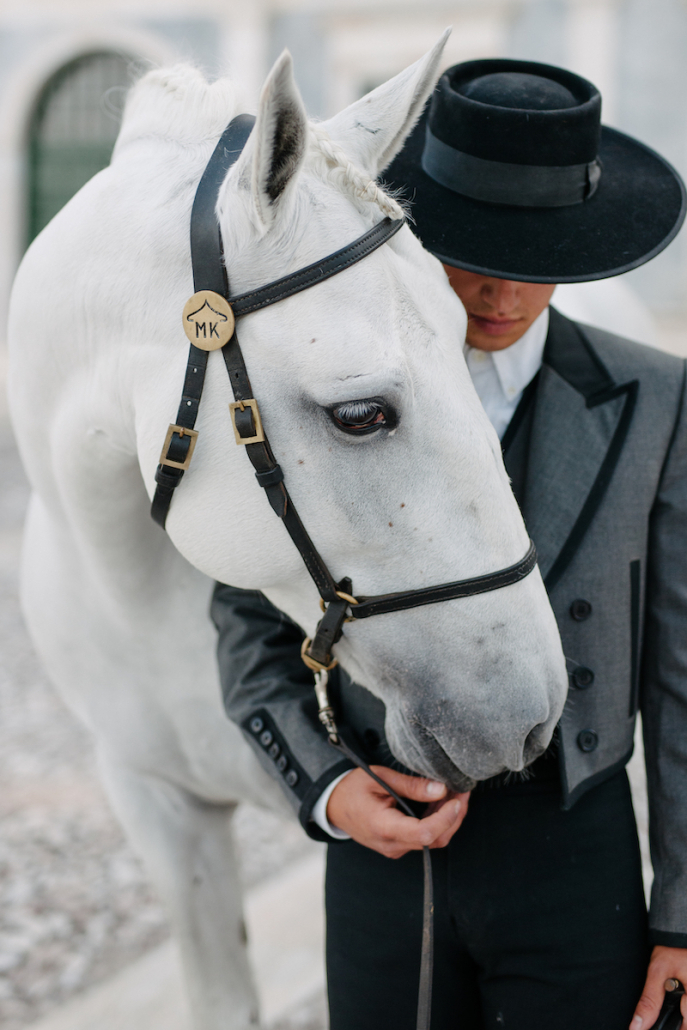
Image by Lena Saugen at Coudelaria Vila Vicosa and Ducal Palace.
Discovering your Superpower
As you develop your mindfulness prowess, you will recognize your ability to stay in tune with your horse. Also, accept your mistakes and where your weaknesses are without beating yourself up. Allowing growth and mastery of skills and ultimately increasing your overall confidence.
Mindful state of awareness as an equestrian:
- Have a deeper connection with our horse
- be more in tune with your emotions and those of your horse
- Greater curiosity and flexibility when learning new skills
- Less stress and tension which is reflected in your body and translated to your horse who feels tension
- Greater patience especially when learing new things
- Greater ability to feel your horse´s movement and reactions
- Be more self-caring and caring towards others
- Improved problem solving
- Becoming more creative
- Feeling happier and more alive
Be Good to Yourself, Be Vibrant and Be in the Generous Present Moment
text by Teresa Burton
Header Image at Emergasol Stud Farm taken by Lena Saugen
RIDE WITH US – CLASSICAL DRESSAGE
Alentejo Ranch Holidays now Booking
/in Portuguese Equestrian Heritage, Classical Equitation, Equestrian Holiday Locations, Equestrian life in Portugal, Blog, Uncategorised, Frontpage Article/by Teresa BurtonFavouring Traditional Methods over Modern Machinery
Text by Teresa Burton Photography by ABR fotografias
Last year we made a visit to the stunning farms of the Tavares Moreira family, located in the Alentejo close to the Spainish Border.
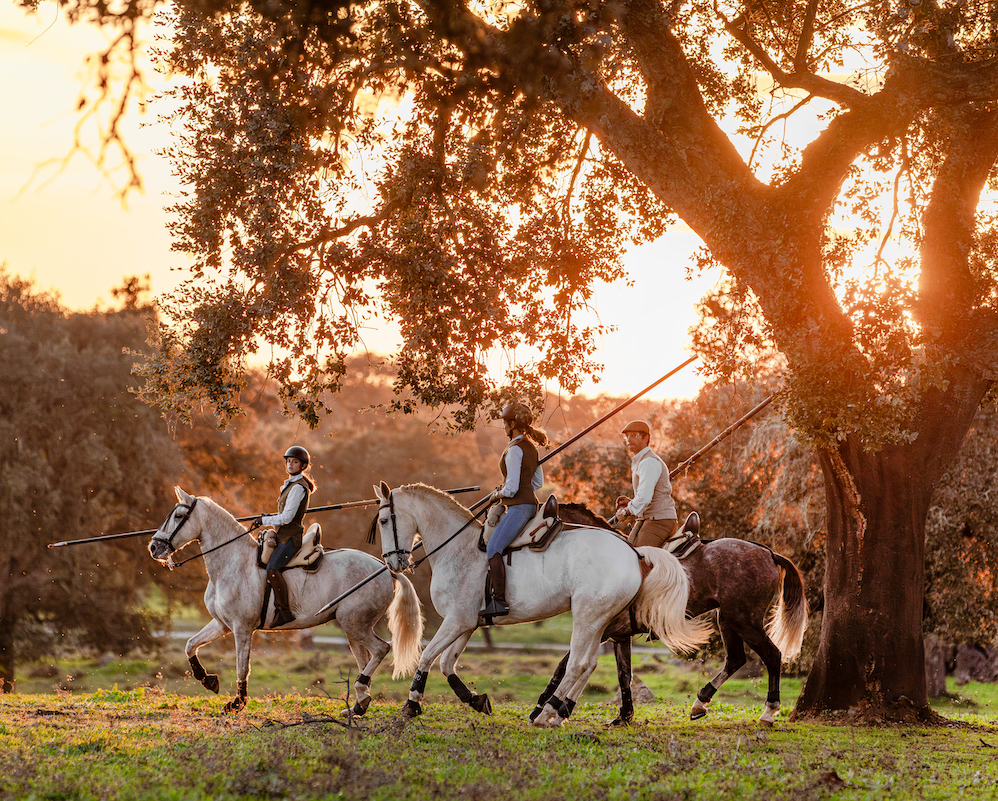
Bernardo Tavares Moreira with his wife Rita Torres Moreira and daughter Maria Francisca Torres Moreira.
The farms are called Herdade da Carapuςa and Herdade D´agosto
During our visit we were inspired to work with the family to open up an opportunity for people to have holidays on the farms. To provide a Traditional Portuguese Farm experience learning about the horses and cattle. Sadly like so many heritage activities many farms have turned away from using the horses to work with the cattle in favour of tractors and quads which they think are quicker and cheaper. However there are those that would disagree with this and highly value the more traditional methods. One of these people is Bernardo Tavares Moreira.
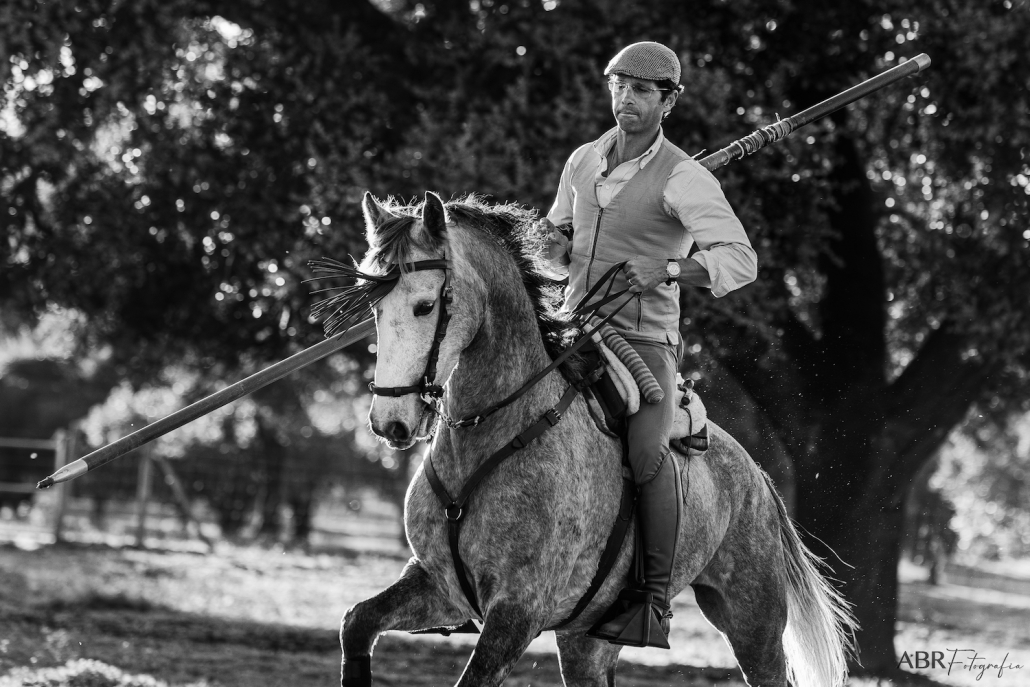
Bernardo Tavares Moreira
Since a very young age Bernardo has always been passionate about the traditional methods and rural life. Growing up in Lisbon he dreamed to be on the farm. A dream that never left him until finally he moved to the Alentejo to spend his days working with the cattle and the Lusitano Horses they bred. He continues to this day working the farm in the traditional way. Although of course, from time to tme he uses tractors and quads, almost always he aims to be managing the farm from the back of a lusitano.
Alentejana Cattle
The family are breeding pure bred Alentejana cattle. This is a Portuguese breed, also known as Transtagan. The breed orginates from the Alentejo region and was used for agricultural work. They are quite similar to the Spanish Retinta Breed.
These gentle animals are a medium build with a golden red colour. The horns are large and pointed forward with upturned tips. The hind legs very muscular and strong and the shoulders long and broad. They are considered rustic, energetic animals and they really suit the beautiful Alentejo landscape.
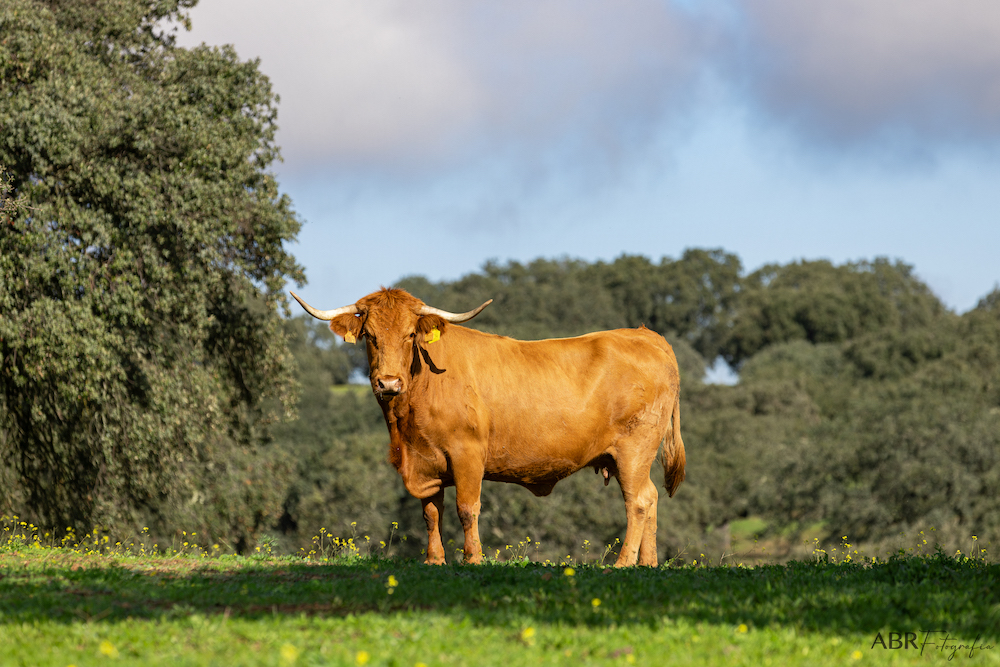
For centuries they were the most important working breed in the plains. However, from the mid 1900´s the mechanisation of agricultural work slowly took over. So the need for them to work the land deminished and they became used primarly for meat. The flavor of the meat is intense and it is very tender. However they didn´t produce enough meat so crossing them with other breeds such as Charolias and Limozines is done yielding more meat on each animal. With this change the pure genetics of the breed started to become comprised.
Because of this the studbook of the Alentejana was established in 1970. Breeders of this wonderful native breed began to work to limit genetic regression. National and community programmes set up to promote conversation and sustainable use of animal genetic resources.

Alenetejana Bull
Bernardo and his family continue this in their breeding programmes. They have 3 cattle herds on the farms. They don´t sell pure bred Alentejana cattle simply select the females to different herds according to their quality and genetics. The highest quality retained to breed pure bred cattle and the others crossed bred with Limousin and Charolias bulls for meat cattle. The cows and bulls are simply stunning.
The cattle are able to graze in expansive pasture lands of rolling hills dotted with cork oaks trees providing plenty of shade in the hot summers. It makes for quite a sight to visit these beautiful herds.
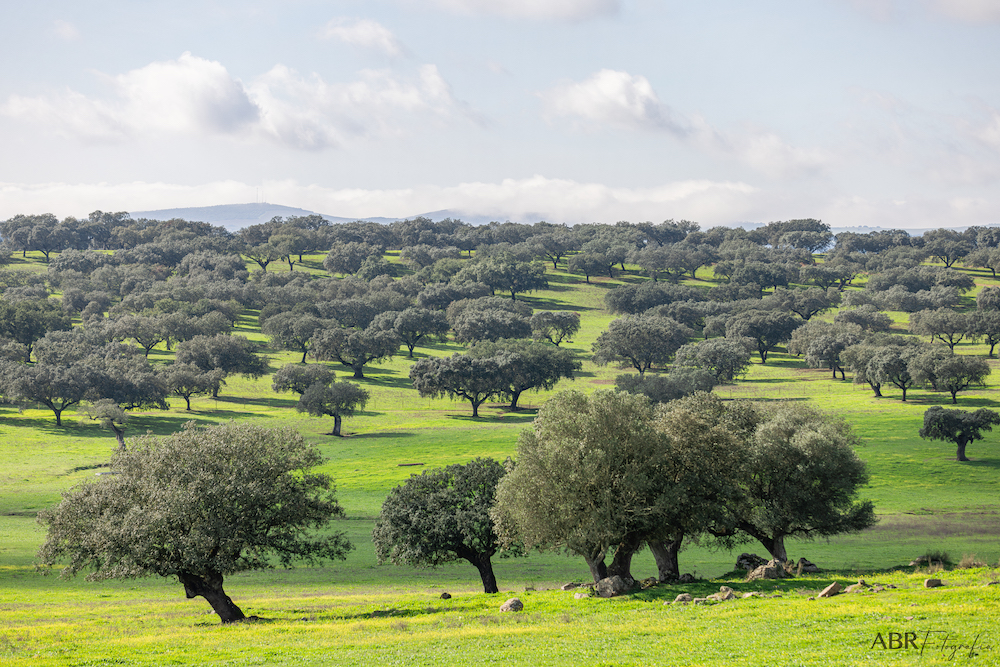
Landscape of rolling hills and cork oak trees
The Farm´s Lusitano Horses
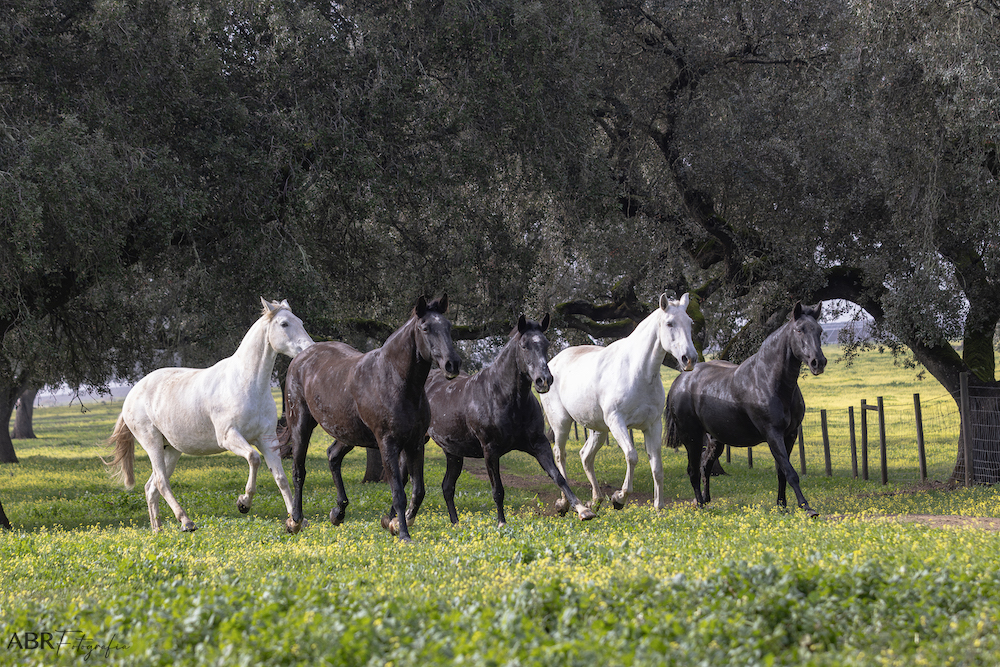
The Lusitanos mares
The stud farm has a small herd of quality Lusitano mares with old bloodlines suitable for bull fighting, working equitation and nowadays dressage. The horse have a lot of Veiga influence and recently with a dressage focus while maintaining the Baroque the mares have been put to the Olympic/GP stallion Forgoso. The horses are selected and some sold Internationally and the others retained on the farm.
The stud name is – Manuel Francisco de Moura Tavares Herdeiros (Manuel Tavares Herdeiros)
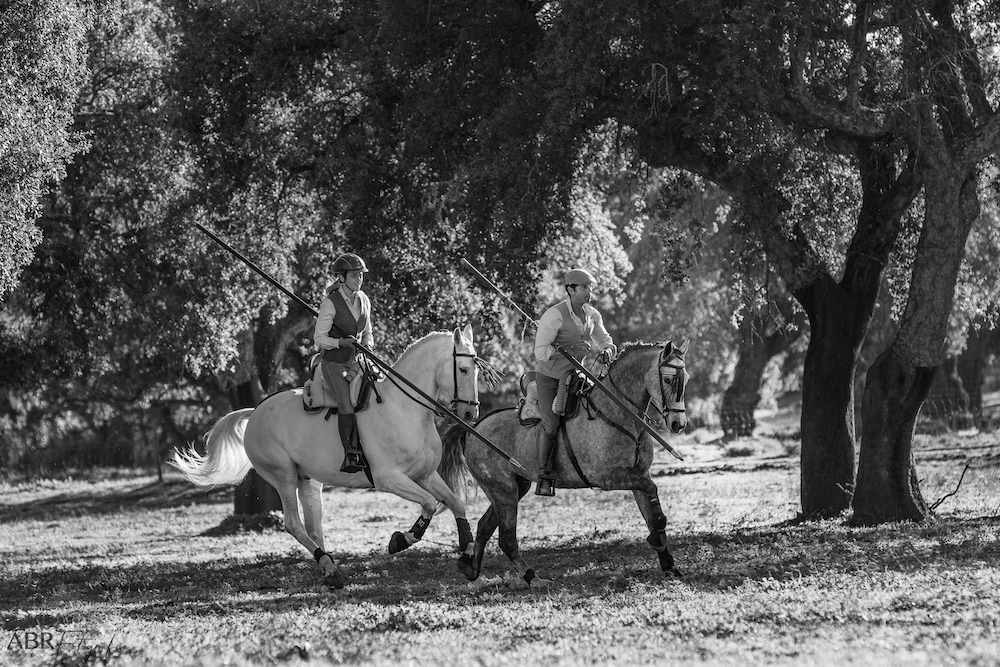
Bernardo and Rita
Bernardo breeds and trains all his horses which are a mix or pure bred Lusitanos and Luso/Arabs. Favouring the Vaqueira / Garrochista style and he has adopted many of the techniques.
Particularly the use the Garrocha that is now seen in part of the working equitation competition.
The working horses are all highly trained and have many advanced exercises that they need to quickly react and manuveur during work. Exercises such as canter pirouettes, lateral movements, canter changes are all required in the work.
His work is very skilled and simpatic and it includes everything from simply moving cattle from one pasture to another to separating animals for vacinations etc. From horse back it is much less stressful for the cattle, they comply easily because they totally accept the horses as their managers .
There is a special bond between the Lusitanos and the cattle.
The Family
This is all made all the more special as the whole family are in someway involved. Everyone brings so much creativity to the table. Bernardo´s wife Rita Torres Moreira is a nutritionist and on weekends she joins Bernardo along with their son and daughter to ride the horses and help with the cattle. Rita and their daughter Francisca are so skilled on their Lusitanos I really enjoyed watching them effortlessly manoeuvre the cows into pens for vacninating. carefully parting the calves so they didn´t get injured and minimising any stress in the process.
Rita´s brother is Rodrigo Torres one of Portugal most outstanding Olympic Riders.
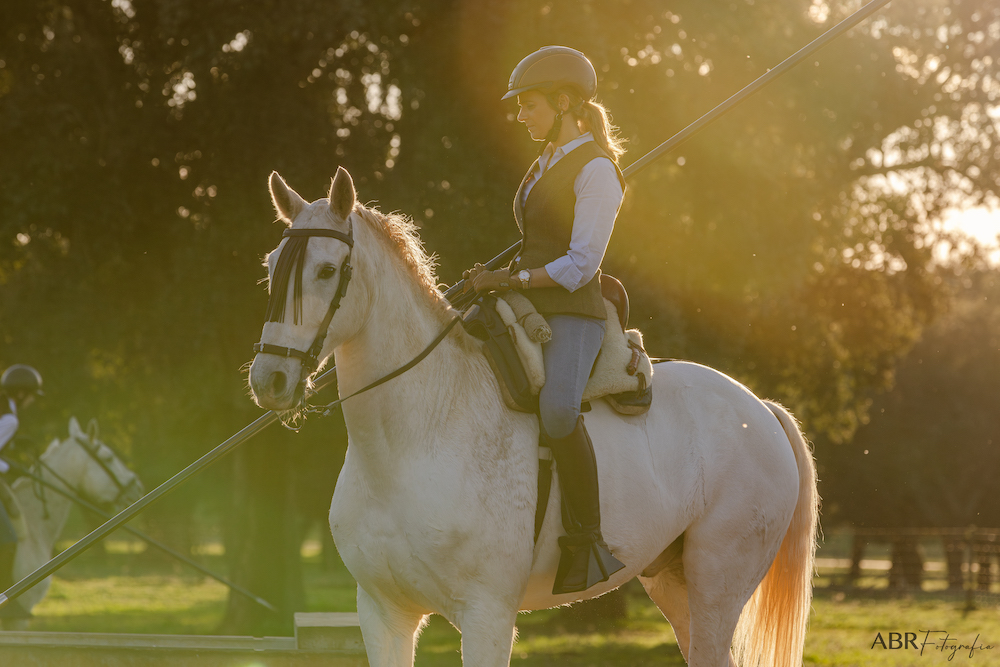
Rita Torres Moreira
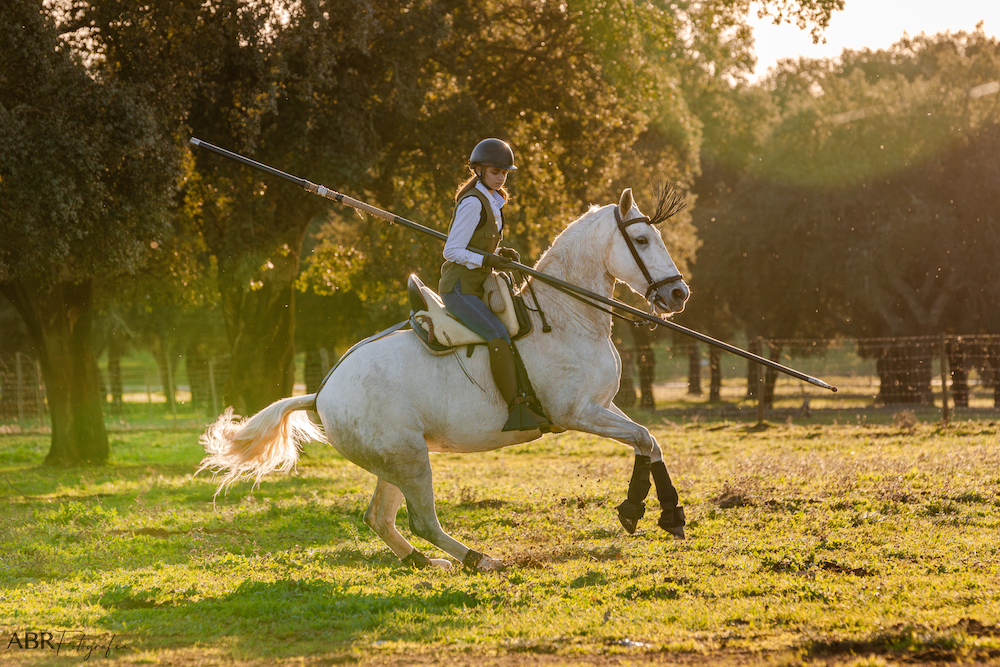
Maria Francisca Torres Moreira
Ana Tavares Moreira the owner of Carapura Farm has converted the old hay and animal barns into the most fabulous accomodations – stylish, creative, well appointed and peaceful. Surrounded by extreaordinary views in all directions you cannot help but love staying there.
Maria Claudia Sampaio Soares – Bernardo´s Aunt is a gifted potter. She has a pottery locally and provides classes for those interested to try it out. You can also order things to be made. We are have several items made by Claudia. Claudia owns Herdade Dagosto and breeds Lusitanos.
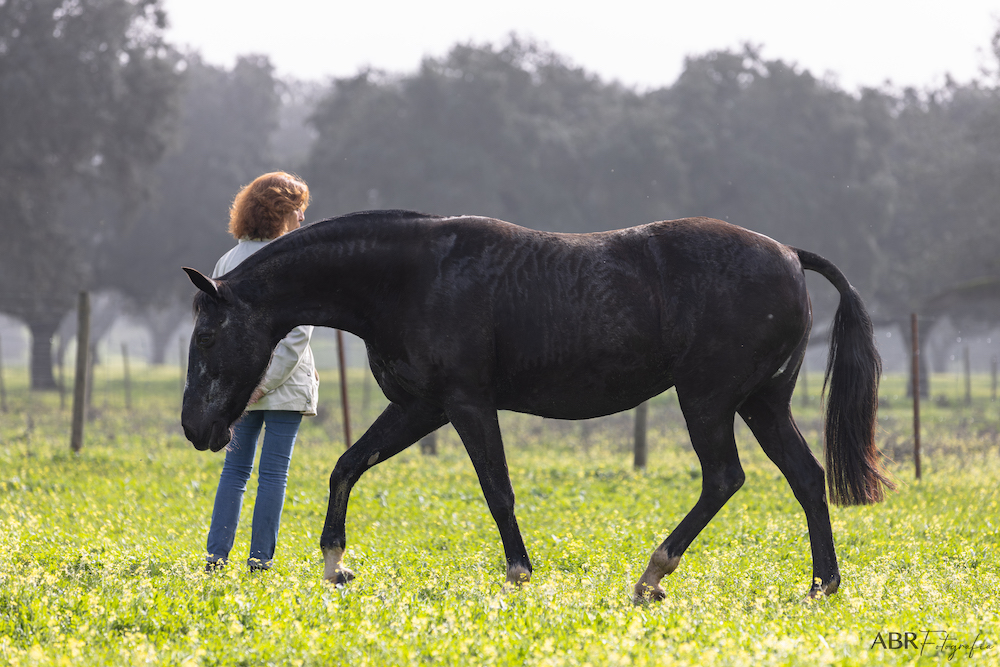
Cláudia Sampaio Soares
THE OPPORTUNITY
We are so happy that now we can offer you the chance to stay on these farm and learn with Bernardo a little about his life, how the horses are trained and worked with the cattle. It is available to up to 4 people per week. We only offer to small groups per week to ensure you have plenty of opportunity for individual tuition and an immersive experience.
Bernardo will provide all the training during your stay and his gentle confident manner will guide you through a remarkable experince of the working horses and all they need to do their job effortlessly.
FIND OUT MORE
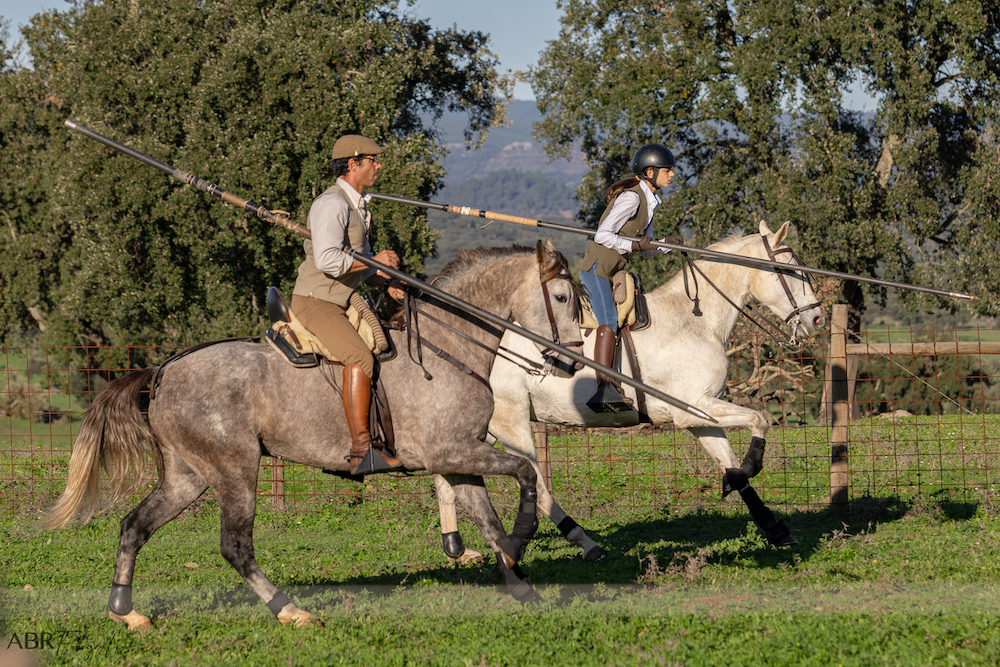
Bernardo and Francisca
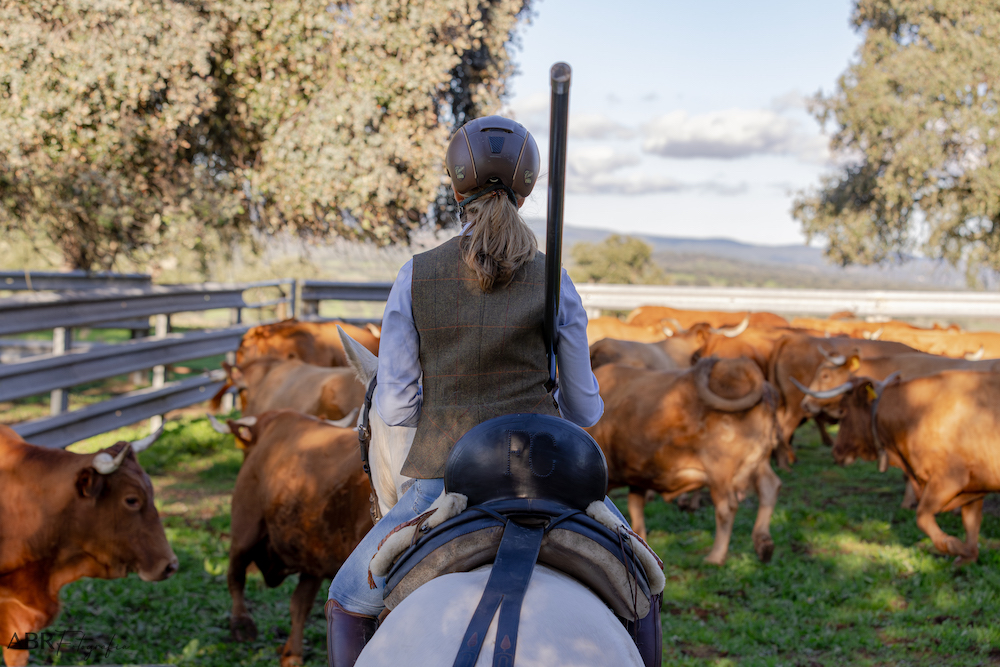
Rita with the cattle
INTERESTED IN HAVING A HOLIDAY ?
WANT TO KNOW MORE ?
2023 National Horse Fair in Golegã
/in Blog, Events in Portugal, Portuguese Equestrian Heritage, Equestrian Holiday Locations, Lusitano Information, Frontpage Article/by Teresa BurtonGolegã National Horse Fair is almost upon us.
It’s an opportunity like no other to emmerse yourself in an equestrian feast morning to night.
With the run up to fair this week is a frenzy of activity for those going with their Lusitanos. Many breeders take multiple horses some as many as 20 animals. So good preparation is is paramount. The horses are inpecability turnouts everyday washed and braided. Costumes, traditional saddlery clean.
Golegã National Horse Fair 3rd – 12th November 2023
Now acclaimed as one of the World´s most prestigeous equestrian event. It is a festival that still embodies Portuguese Equestrian Heritage seemlessly blended with modern equestrian sport. It is an opportunity like no other to emmerse yourself into an equestrian feast morning to night.
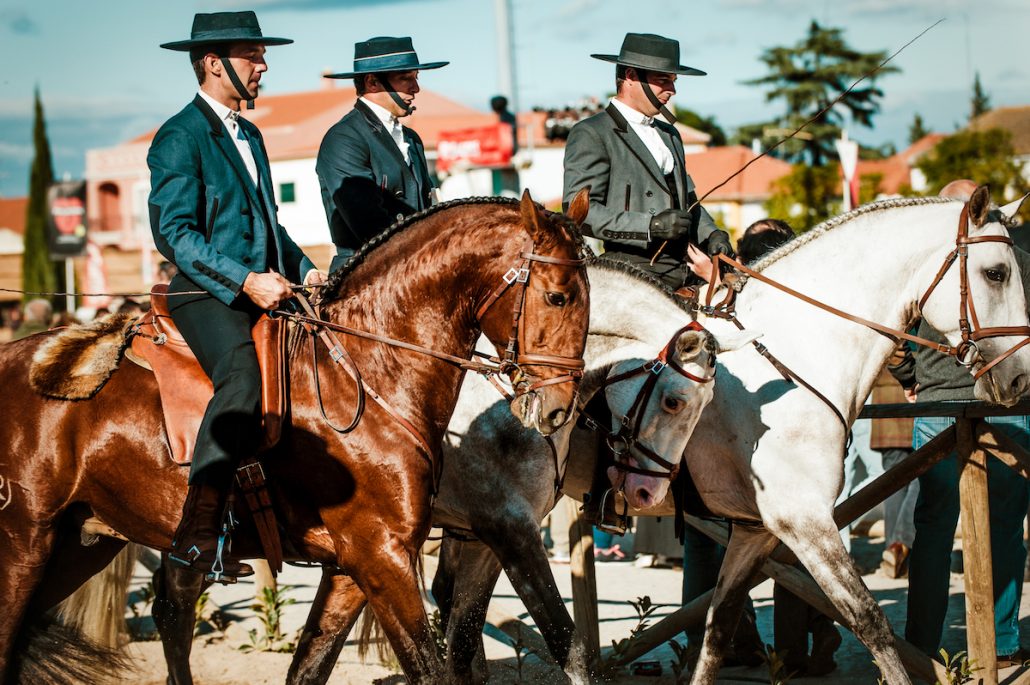
If you are a regular visitor or going for the first time it is lovely to find out a little bit more about this the fair came about –
There is a fasinating history about the fair which was orginally called Feira de São Martinho.
Always Held In November
The Fair is held at the beginning of November over a 10-day period. The dates must include the most important day, 11th November, which is the Dia de São Martinho (the Feast of Saint Martin). On this day the people eat roasted chestnuts and drink new wine for Magusto – Magusto is the celebration of tasting the news wines or Agua Pe and roasting chestnuts. You can read the full history of this remarkable fair here.
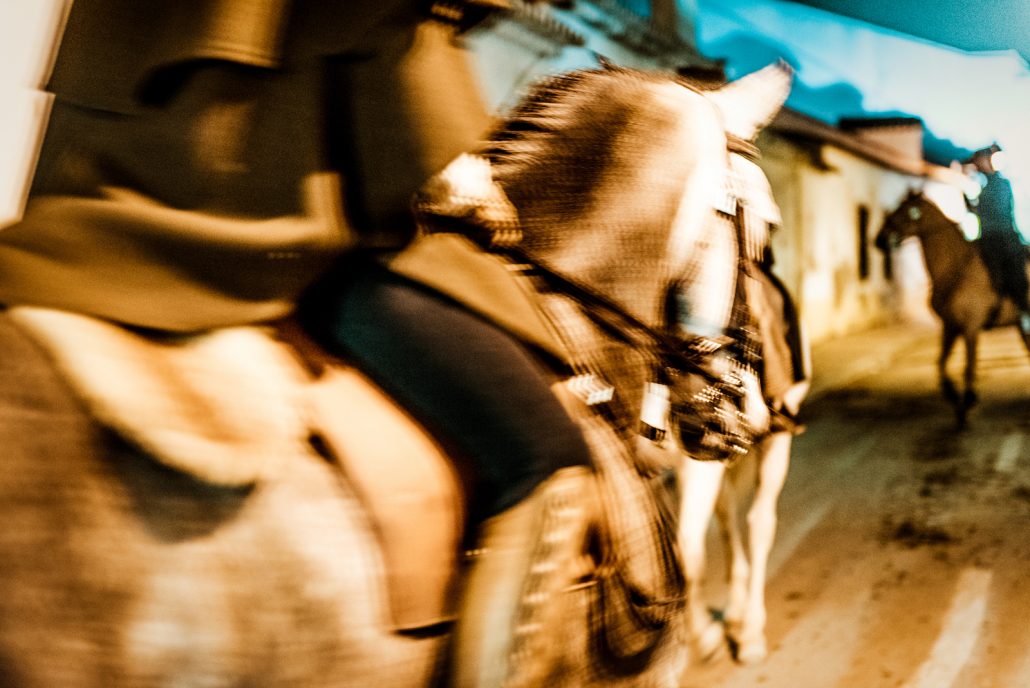
LUSITANOS CENTRE STAGE
Golegã is considered by many to be the ultimate event to see Lusitanos everything from the young rising stars to established International competition horses. There are a multitude of shows and classes over the 10 days where you can really experience the special qualities of this versatile horse.
The versatility of the Lusitano breed is so elegantly expressed in the events held over the fair – You will be Captivated!
It is prudent to plan you time to ensure you seize the opportunity to see as many of the events as possible. There is an amount of walking between locations so give yourself time for this in your planning. For the full program go to the official Golegã Page
We would be delighted to meet you at the fair and share sometime with you visiting horses or just a chat over a coffee. Also during your stay you are welcome to visit us at our yard close to Lisbon airport take some classical dressage lessons or try our Lusitanos for sale.
You can send us a whatsapp message on 00 351 913 175 772 to arrange a get together either in Golega or at our yard.
Text by Teresa Burton. Images by Lena Saugen Photography
Hand Stitched Saddlery – an ART rarely seen today
/in Blog, Articles, Portuguese Equestrian Heritage, Portuguese Artisans - Handmaking Equestrian items, Equestrian life in Portugal, Uncategorised, Frontpage Article/by Teresa BurtonArticle written by Teresa Burton
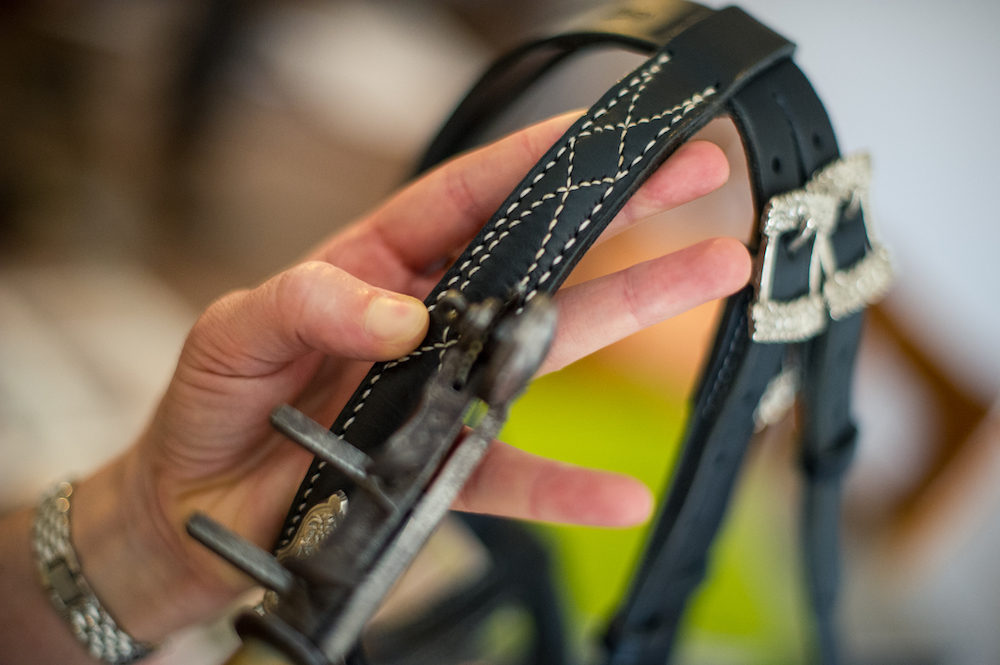
Image by Lena Saugen – Hand stitched bridle placing the metal ornaments
The saddle craftsman takes great care with every stitch, responding to the
subtle variations in the leather.
It’s a meditative act in a world that no longer values such things. Hand sewing sacrifices speed for the sake of quality. It is time-consuming, that’s part of its charm.
Sadly, with the modern desire to have everything immediately, handmade saddlery is becoming harder to find. There are very few people now that can make a living in this heritage art and sadly even less interested to learn the trade.
The hand maker is a passionate soul who creates every piece right from the moment he or she chooses the materials, cuts the shapes and lovingly hand stitches each piece. This takes time and so limits the maker to how many products they can produce in a month. They need to be fairly rewarded for the beautiful and meticulous work they do.
Those that are prepared to wait and can afford the products are in for a treat, you will own a piece of functional art.
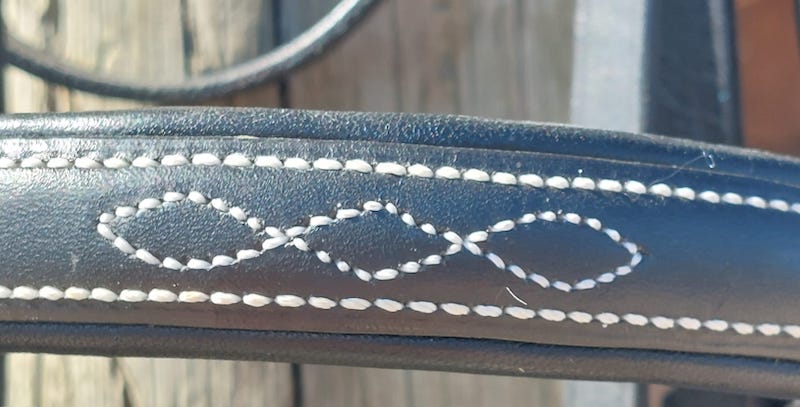
Image by Teresa Burton – Hand saddle stitched brow band.
What makes Hand Stitching special?
Hand stitching compared to machine stitches is very different. Hand stitching is generally much stronger. In fact the leather is more likely to give way sooner than the stitching. Why? Because when you use a machine, that line of stitching requires two separate threads that lock around each other in what is known as a “locking stitch”. Whereas, a hand-stitched line uses a single thread with needles on either end. The thread runs back and forth on either side of the leather in what is called a “saddle stitch” .
The saddle stitch seam is considered an indestructible seam
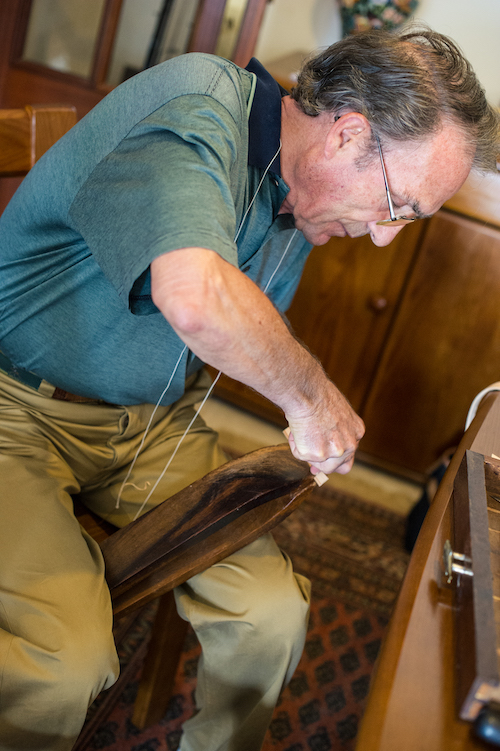
Image by Lena Saugen – Jose de Sousa grandson of the famous Jose Victorino
This seam was designed more than a century ago by craftsmen saddlers and harnessers to make coupling parts for working horses – saddle, equestrian, horse-drawn carriages etc. Also the parts of leather heavily subjected to wear (handles, belts, etc.). They used it to stitch luxury leather goods such as luggage.
Goyard, Dior, Hermes, Chanel or Louis Vuitton valued hand-stitching and thats why their products have premium prices. Understanding the difference in the stitching is what makes it easy to recognise fake articles. However, sadly today even in these French luxury houses 99% of the stitching is done by machines.
If a thread were to snap on a piece that sewn on a sewing machine, the entire line of thread could potentially unravel allowing the two pieces of leather to separate. However, in a hand-stitched item, the thread will not unravel and the leather pieces will not separate from each other. More importantly, it’s easier to repair the line of stitching.
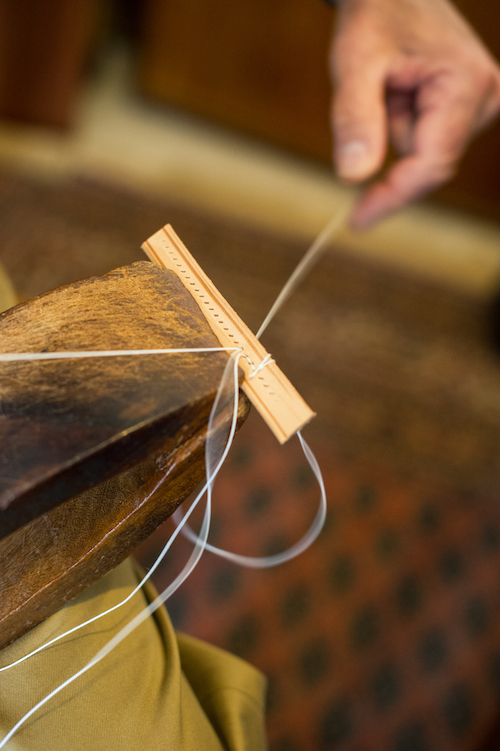
Image by Lena Saugen – The saddle stitch method
How to recognise the differences
It is important to recognise that craftmen and artists can also work their magic with sewing machines and this is certainly not about belittling the sewing machine. I am simply casting some light on a craft that is losing traction in the modern world.
The main aesthetic differences to recognize are:
- The reverse side, is less “beautiful” on a machine seam.
The regularity of the machine against the charm of a handmade product.
The direction of inclination of the thread on the face and the reverse. - On the machine-seamed side: the inclination goes upwards
- On the hand-seamed side: the inclination is downwards
In hand stitching the maker can use a larger thread thickness and for really wide threads the holes are punched and they can achieve or more rugged look if required. Some leather crafters use smaller holes on their chisels or pierce the leather using an awl, then use a much finer thread to give their items a more sophisticated look.
The method and tools
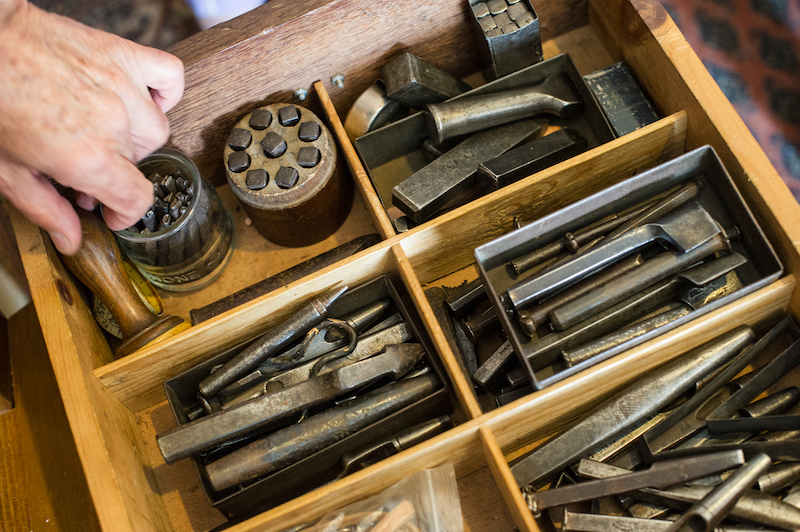
Image by Lena Saugen – Vintage tools for leather work over 100 years old and still in use-
Hand stitching saddle stitch (and tied saddle stitch) must be strong, flexible, waterproof and pretty because it is a decorative element in its own right. The sewing is done by hand without mechanized means. The tools are rudimentary, many over 100 years old, and require perfect mastery.
Each tool is a work of art in its own right and bares the loving wear of countless hours working the leather peices in the craftmans hands. A craftman´s tool kit consists of :
- A sewing clip (to hold the piece and leave your hands free)
A wheel or claw to strike (to mark the location of each point)
An awl (tool for perforating leather)
A linen thread
Beeswax
Two needles
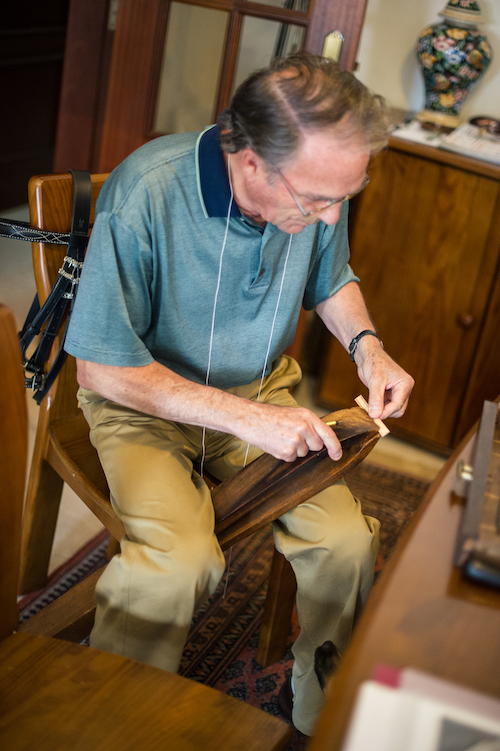
Image by Lena Saugen – Jose de Sousa
The particularity of the saddle stitch is to sew with a thread and two needles. In order to be able to use both hands for holding the two needles, and the awl to pierce the leather, the piece is held in a wooden sewing clip, wedged between the legs.
Image by Lena Saugen – Hand Making Tools for Saddlery
Saddle Stitching and Machine Stitching both have their place.
Saddle stitching without a doubt makes for a more durable, long-lasting product. The question is whether or not an item requires that level of durability or if corners can be cut to lower the overall cost of the item.
There is a market for both and beautiful products are produced with either method. It is cheaper to produce products that are machine stitched so making it more affordable for many comsumers. However if you can find your way to owning one hand stitch item you will be owning a piece of art.
OUR MISSION
We are utterly enthusiastic about Equestrian Heritage . Sadly in Portugal there are barely any hand stitchers left to produce beautiful bridles, saddles and halters. We have made it our mission is to support and promote Portuguese Artisans and heritage items.
We are very previlaged to be working with some true artists, you will find their work in our online shop.
Feel free to contact us if you have any special requests.
Images by Lena Saugen Photography, Teresa Burton and Christophe Taniere
Text by Teresa Burton
Where Horses Coach Humans
/in Blog, Articles, Equestrian Holiday Locations, Uncategorised, Frontpage Article, News/by Teresa BurtonLusitanos Make Great Coaches
A refuge for all the senses – this is the margravial hunting lodge Falkenhaus. Built in 1722, this elegant building is affectionately known as “the Falcon Hood”. With its recent renovation, the owners Eva and Randolph Klautke have created one of the most beautiful retreats offering well-being for people and animals.
The lodge is located near the Wagner town of Bayreuth on the edge of the Fichtelgebirge.
Creating a symbiosis between the charm of the old castle and the hip boutique character was important to the Klautke family during their conversion.
Accordingly, the palace hall, bar, library and salon were largely left in their original condition and upgraded with modern interior highlights. For the noble four-legged friends, a stable wing was built in the old barn and a riding hall and riding arena were built in the castle garden.
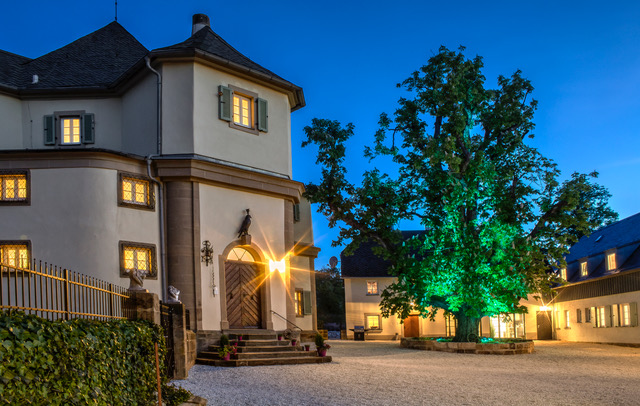
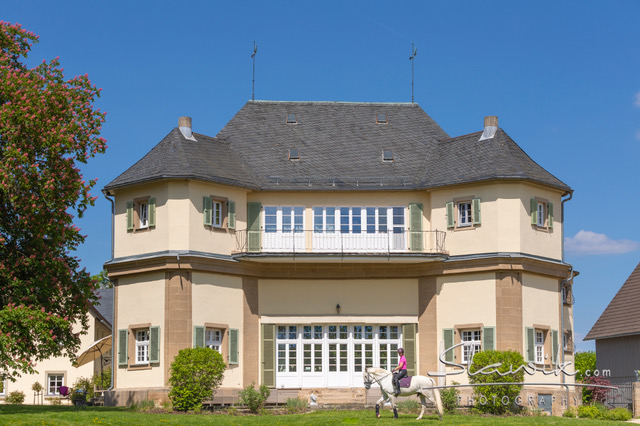
The fantastic ambience of Schloss Falkenhaus is now offering stunning events-
- Special seminar formats such as horse-assisted coaching – a method in which the horses act as coaches.
- Welling Being Weekends
- Coroporate Marketing and Promotional events
- Weddings
In addition to Shetland pony Harald and Trakehner mare Lilly, the coach team also consists of Lusitano gelding Elmo and the Lusitano stallions Merengue and Egipcio. The latest arrivals are two Lusitano fillies Ofelia and Pirilampo, whom joined the team in 2022.
Horse-Assisted Coaching
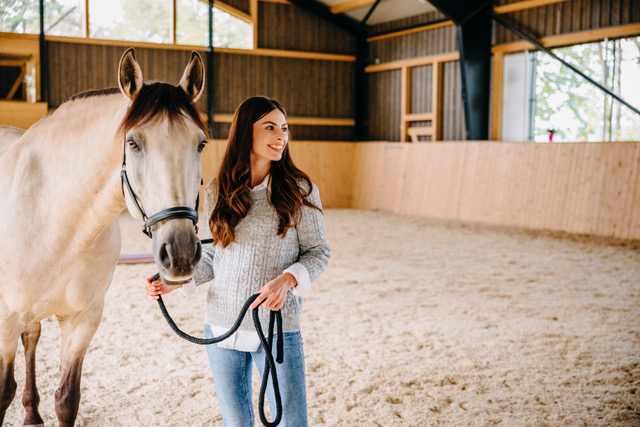
In horse-assisted coaching, the horses are the mirror to the human participants. They can highlight and reveal discrepancies such as team conflicts. They reflect our energies and in turn this helps teams to explore relationship topics. This interaction provides a wonderful platform to find ways to resolve old patterns of thought and action. The horses do not need any special training for this coaching, however it is important that the animals have balance and mental strength. We carefully select horses to suit and enjoy this work.
“There is something about the outside of a horse that is good for the inside of a man.” – Sir Winston Churchill
These experiences can really open people up to new self awareness and communication possibilities in a fun and calm environment.
Eva Klautke: “In our view, their sensitivity, curiosity and people-orientation predestines the Lusitanos for this task as assistant trainers in our seminar formats. We are very pleased that in Teresa Burton and her online platform “Lusitanohorsefinder.com.” We have a partner at our side who also has a great feel for the individual characters when it comes to brokering and selecting the horses.”
Programmes for Companies and Individuals
In addition to the academy formats for companies such as horse-assisted coaching. Schloss Falkenhaus also offer the private “wellness” programs, such as yoga retreats and other related short breaks. Here, too, the four-legged mental trainers are usually involved.
“Horses teach us to be present, aware, and connected not only with them, but with ourselves and our environment.” – Lisa Wysocki
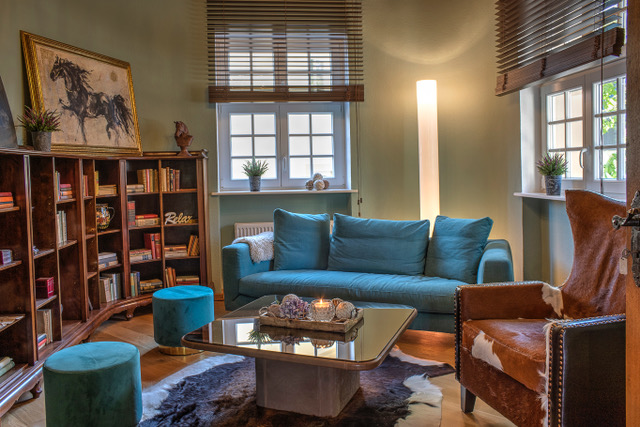
Interested you can contact them via their website http://www.schloss-Falkenhaus.de/
You can also email Eva
We Love all Things Heritage, Classic, Timeless Style
/in Blog, Articles, Uncategorised, Frontpage Article, News, Interviews - riders, breeders and related people/by Teresa Burton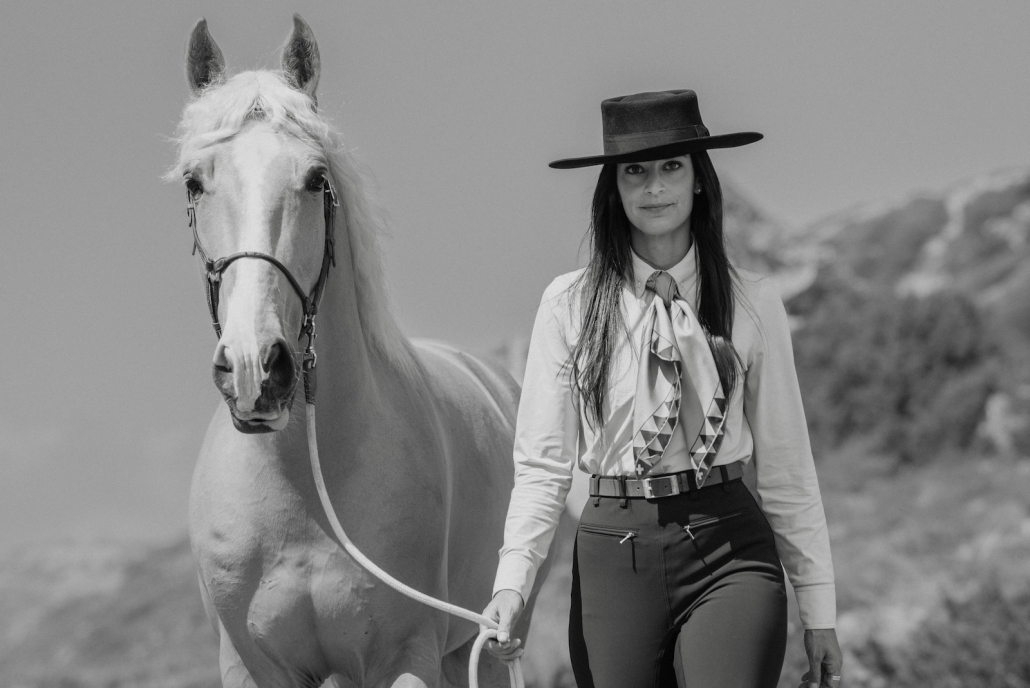
Cool, classic & not afraid of statement elegance
Aisling Equestrian Clothing is an exciting Stockholm brand inspired into reality by a dynamic duo Charlotte Treschow and Johanna Bodin. These two creative women were looking to bring vintage style into modern equestrian clothing and seeing their latest collection they really are hitting the mark.
Fashion has always been of enormous interest for the duo. Both find inspiration from classic style icons like Audrey Hepburn, Grace Kelly as well as current fashion trends and from men’s fashion.
The company began in under 10 years ago with the intention not to compromise the function that you need in riding wear nor the style that you have outside the stable,” In others words clothing you could be seen out wearing in a city coffee shop and not look out of place.
Rethinking Equestrian Fashion
Timeless silhouettes made in high technology fabrics: we create modern equestrian fashion with focus on details and quality. Make it count and join us!
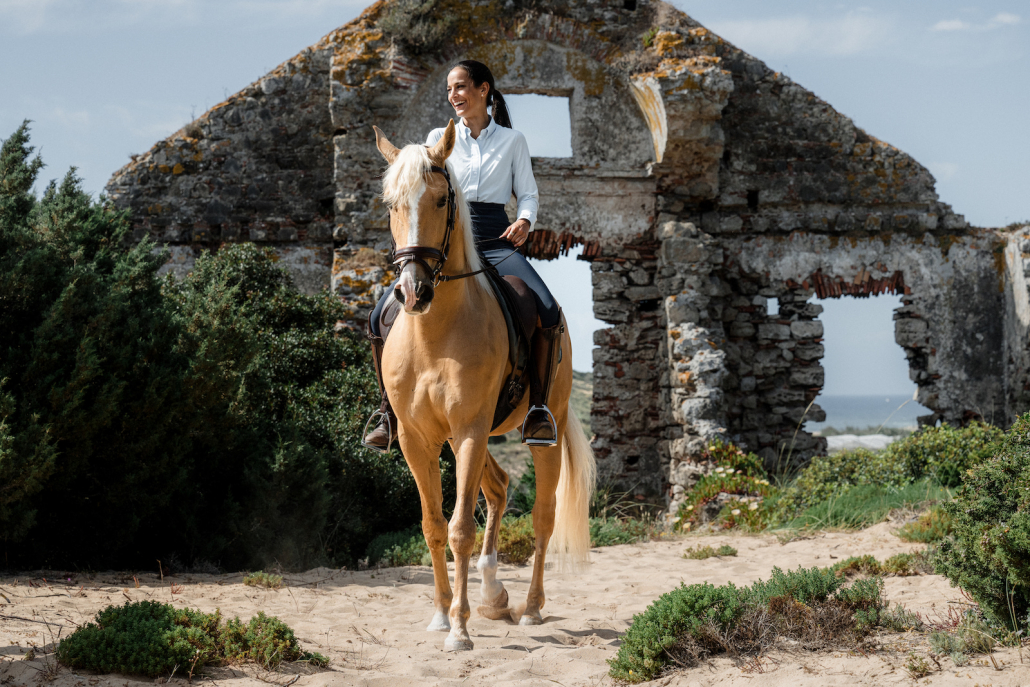
In May ths year it was a real pleasure to host Lena Saugen and Therese Alhaug, who came over from Norway with a mission to photograph the latest collection from this quality brand. What´s more, everything was made even better by Aisling Equestrian choosing the up and coming International Grand Prix Dressage Rider Rita Ralao be their model and to sponsor her.
Rita Ralão – GP Dressage rider living and working in her family business Ralão Dressage Team. Located close to Cascais in Portugal
I am always ready to promote great projects, riders, horses and brands and this was every bit what we hoped it would be.
Rita made a perfect model and all the contributors to the day were spectacular. I sincerely hope we will be able to host further shoots in the future. Above all, it is great for Portuguese Equestrian Life and the highly talented riders now competing on the International Stage.
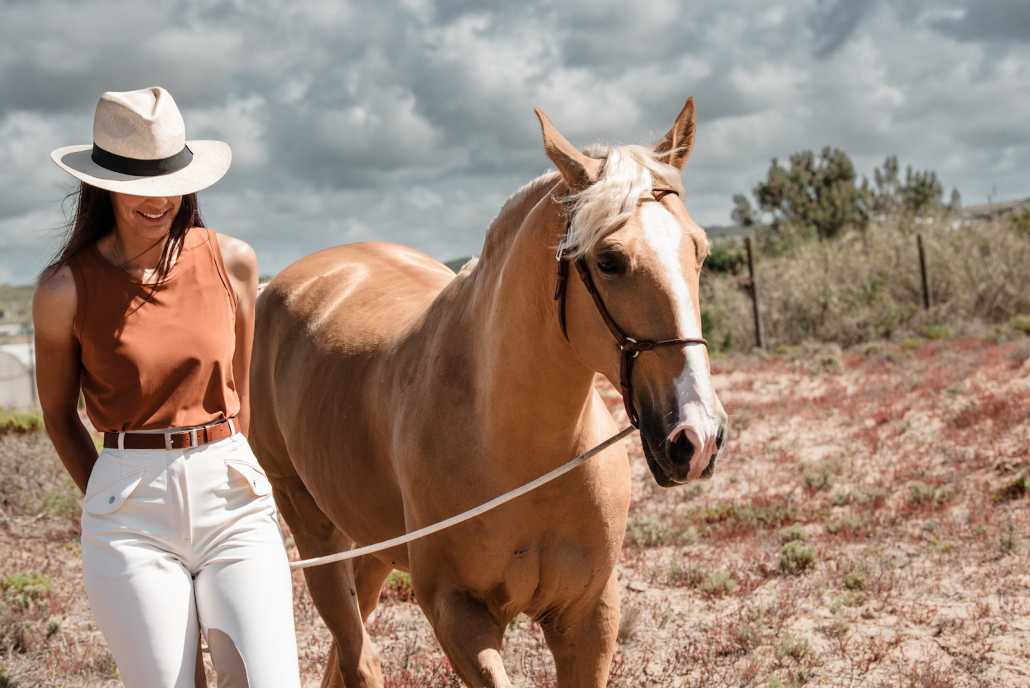
For more about the beautiful styles from Aisling Equestrian check out their website. The garments are high quality in fabrics, finishes and style – above all you will not be dissappointed.
Images by Lena Saugen Photography
Editor/Writer Teresa Burton Lusitano Heriatge
Thank you to Daniela and Raquel Costa and the lovely Palomino Lusitano Limao. Nuno Cavaco´s logistics support. Therese Alhaug for video clips and styling.
Ralao Dressage – Facebook
How to Identify a Lusitano is Pure Bred
/in Farrier, Vet - Lusitano Care, advise Tips & Services, Lusitano Information, Blog, Articles, Uncategorised, Frontpage Article/by Teresa BurtonHow do you know a Lusitano is pure bred?
Many have made the mistake of assuming the Blue Book defines a Lusitano as a pure bred horse. But this is simply not the case at all. When you are looking to buy a Lusitano horse or start breeding project it is important to understand how the breed is registered and approved.
It is the registration and approval and not the blue book that denotes a pure bred Lusitano horse
THE BLUE BOOK
The purpose of this book is to act as –
- A passport for travel nationally and internationally.
- A way to identify the horse.
- To keep a record of the required vaccinations.
- The book must be with the horse at all times.
A cross bred Lusitano can have a blue book and in fact to be exported they have to have one. In Portugal many cross bred Lusitanos have a green book as it is cheaper and quicker to get. However should the owner wish to sell their horse to a buyer outside of the country a blue book must be obtained. To do this a vet needs to visit in order to registered the horse´s chip number, note distinguishing features etc.
The signed paperwork with proof of ownership etc and the payment is submitted to the APSL to issue the blue book. If you are waiting to export your Lusitano sometimes it is possible to pay an extra fee to express this service.
- Note all vaccines must be update in the blue book for travel.
Registering and Approving a Lusitano
A Lusitano is only classed as a Pure Bred Lusitano if it is registered with the APSL in the adult studbook. Both the parents have to be approved for breeding and registered. However a Lusitano can be registered in the studbook and not approved for breeding.
Note : A foal born, from un-approved and or unregistered parents, will not be accepted. If the parents are registered, but not yet approved after the foal is born, they have a certain amount of time to approve the parents.Should they fail their approval, the foal will not be classed as a purebred but instead as a cross bred.
Blood and DNA
The parents of the horse have to be blood tested and/or have DNA taken, this is done at an approval or when the horse is registered. This ensures all offspring have proof of their parentage. Usually the blood is taken from the foals in the first year to identify them and their parents.
To look up a Lusitano and check he/she is registered as pure bred and is approved for breeding you need to have the following information
- The full name of the horse
- The name of the breeder
- NIN/Chip/UELN
One or all of these will ensure that you can search in the Public access to the Stud Book on the APSL website (https://www.cavalo-lusitano.com/en)
If the horse is registered they will be shown here will their details, date of birth, colour, breeder, owner and bloodlines.
Understanding what defines a cross bred Lusitano
A cross-bred Lusitano can have a couple of meaning –
- It is actually a Lusitano cross with another breed. There is now a new class of Lusitano which is a ´Luso Warmblood’ (Sport Lusitano) and this is a Lusitano crossed with another sport breed such as a warmblood.
- It is a Lusitano but one or both of the parents were never approved for breeding. This can happen if one dies before getting to be approved or the owner simply never took the horse for approval or they did and the horse failed to reach the grades required.
- If the Lusitano has never been registered
When you are buying a Lusitano you can easily check the registration online. The seller and or agent should provide you with all the details you need to check for yourself. If this is not forthcoming then we recommend you look elsewhere for a horse.
CBD oil for horses: what do you need to know
/in Articles, Farrier, Vet - Lusitano Care, advise Tips & Services, Lusitano Information, Blog, Frontpage Article/by Teresa BurtonCBD for Horses by Cecilia Leal
Nowadays, products based on Cannabis plant are becoming a popular trend, especially for human medical use. However, what do we know about its use in pets, more specifically, in horses?
The first thing to note on this subject is that there is common misunderstanding between the terms cannabis, marijuana, hemp, CBD and THC, as well as an erroneous perception that CBD oil contains the
(tetra-hydro-cannabinol). Let us start by clarifying thepreviously mentioned terms.
The Plant
Cannabis is an Asian herb of the family Cannabaceae, which comprises two different species: Cannabis sativa and Cannabis indica. Although there are similarities between the two, there are also important differences: Cannabis sativa belongs to the hemp family and has tough fibrous, tall and loose branches, and Cannabis indica is a low-growing densely branched species. Unfortunately, the term is used interchangeably in popular culture with marijuana although strains of cannabis can be either marijuana or hemp depending on their concentration of THC.
Hemp (Cannabis sativa) is legally defined (in the USA and the EU) as any part of the cannabis plant that contains less than or equal to 0.3% THC. Hemp has traditionally been farmed for industrial uses (e.g., textiles, paper, biodiesel, construction materials), as well as for food (hemp seeds and hemp seed oil).
The term Marijuana is typically used for the psychoactive dried resinous flower buds and leaves of the cannabis plant (Cannabis sativa or indica) but can refer to any part of the cannabis plant that contains more than 0.3% of THC (De Briyne et al., 2021).
CBD & THC applications
The Cannabis plant contains hundreds of different active compounds, which have either psychoactive or non-psychoactive effects. The two main components are are THC (tetra-hydro-cannabidiol) and CBD (cannabidiol). THC is a psychoactive component of the cannabis plant that is linked to the ìnebriated` state.
CBD, on the other hand, has been investigated for many conditions, most notably epilepsy, but also including, anxiety, mental health conditions such as schizophrenia, appetite improvement, nausea relief, sleeping disorders, elevated intraocular pressure, pain related to chemotherapy treatments, and multiple sclerosis-related spasticity.
THC is psychotropic in humans and dogs, which have a high number of cannabinoid1 receptors in their brains. CBD, on the other hand, has no psychotropic effects and is particularly effective at low doses.
Studies of CBD effects on horses
In horses, CBD products have shown promise for treatment of hyperaesthesia (Ellis & Contino, 2019), osteoarthritis pain (Sanchez-Aparicio et al., 2019), anti-inflammatory effect in chronic inflammation (Turner et al., 2021), visceral pain, inflammatory processes and changes in intestinal motility in horses (Galiazzoa et al., 2021). Although available objective data regarding therapeutic dosage is still scarce, different dosages have been studied and did not cause adverse effects, like incoordination or sedation, and was overall well tolerated (Yocom et al.; Blanc et al.; Williams et al., 2022).
A study made by Ellis and Contino (2019) reported improvements in a horse with severe pain sensitivity when administered 500 mg CBD per day. Another study reported lower reactivity (spookability) after 6 weeks of supplementing with 100 mg of CBD every day (Draeger et al., 2021). In addition, according to Turner et al. (2021), CBD was responsible for decreased inflammatory cytokines (proteins associated with pain and inflammation), in a study conducted in vitro.
Galiazzoa et al. (2021) performed a study in order to identify the distribution of different cannabinoid receptors in the equine intestine. These findings support CBD use against visceral pain, inflammatory processes and changes in intestinal motility in horses. Therefore, it could have interesting applications in cases of colic, inflammatory bowel disease and intestinal hipomotility after colic surgery.
Is CBD safe to use?
Williams et al. (2022) conducted pharmacokinetics studies looking at the absorption and clearance of CBD. A dose of 175 mg and 1000 mg was given to 500 kg/1100 lb horses, orally, once per day for 7 days. There was no incidence of diarrhea or loose stool, decreased appetite or somnolence recorded.
However, it is important to note that despite the relatively high dose (1000 mg daily) plasma concentrations were below the effective concentrations reported by Turner (2021). Therefore, a horse might need significantly higher oral doses of CBD for any effectiveness against pain and inflammation.
In another study conducted by Yocom et al. (2022), CBD was reliably detected in synovial fluid at 1500 mg single dose. Because cannabinoid receptors have been identified in osteoarthritic joints in humans and dogs it explains the pain modulation mechanism of osteoarthritic pain, in this study mild hypocalcemia was seen in all horses and elevated liver enzymes were observed in 8/12 horses, but these changes improved or normalized within 10 days after the final CBD dose. Some horses presented soft-form manure for a few days and 10/12 gained weight. All horses maintained normal physical examination parameters, attitude, and appetite throughout the duration of the study. No behavioral changes, including sedative-effects, were observed.
Most CBD studies performed on horses are very recent (the latest one dates of 2019) and additional studies are required to investigate the efficacy in treating specific conditions and to establish therapeutic doses.
What is the status of CBD oil use on competition horses?
According to FEI’s regulations, all natural and synthetic cannabinoids containing THC are banned substances, meaning they are not permitted for use on the competition horse at any time. However, cannabidiol (CBD/CBDA) is under controlled substances. According to FEI, controlled medication aresubstances that are deemed by the FEI to have therapeutic value and/or be commonly used in equine medicine. They have the potential to affect performance and/or be a welfare risk to the horse. This means that although your horse may be administered CBD, you cannot compete while it is present in your horse’s organism.
Previous research has indicated that CBD can be detected in urine for up to 72 hours following a single dose. It should also be noted that, despite the considerably low quantity of THC present in CBD products,THC can be present for up to 24 hours post administration in plasma samples (Williams et al., 2022).
Equine Vet Located in Ericeira Portugel (close to Lisbon) Contact – 00 351 915 010 360
Email – ceciliarodrigoleal@gmail.com Facebook Page Equi24
OTHER ARTICLES – Feeding Lusitanos, Shoeing, Piroplasmosis
Sources
Blanc M. P. St. , Chapman A. M., Keowen M. L., et al., Effects of a Supplement Containing Cannabidiol
(CBD) on Sedation and Ataxia Scores and Health, Journal of Equine Veterinary Science,
10.1016/j.jevs.2022.104085, 117, (104085), (2022).
De Briyne, N.; Holmes, D.; Sandler, I., et al. Cannabidiol Oils and Tetrahydrocannabinol—What Do Veterinarians Need to Know? Animals 2021, 11, 892. https://doi.org/10.3390/ ani11030892.
Draeger A. L., Thomas E. P., Jones K. A., et al., The effects of pelleted cannabidiol supplementation on heart rate and reaction scores in horses. Journal of Veterinary Behavior, 2021, Vol 46, 97-100.
Ellis K, Contino E. Treatment using cannabidiol in a horse with mechanical allodynia. Equine Vet Educ 2019; 33:e79–82.
Galiazzoa G., Tagliaviaa C., Giancolaa F., et al., Localisation of Cannabinoid and Cannabinoid-Related Receptors in the Horse Ileum. Journal of Equine Veterinary Science, 2021, Vol 104, 103688.
Sanchez-Aparicio P., Floran B., Velazquez D. R., et al., Cannabinoids CB2 Receptors, One New Promising Drug Target for Chronic and Degenerative Pain Conditions in Equine Veterinary Patients, Journal of Equine Veterinary Science, 2020, Vol 85, 102880.
Turner S, Barker VD, Adams AA. Effects of cannabidiol on the in vitro lymphocyte pro-inflammatory cytokine production of senior horses. J Equine Vet Sci 2021;103:668.
Williams M.R., Holbrook T.C., Maxwell L., et al. Pharmacokinetic evaluation of a cannabidiol supplement for horses. J Equine Vet Sci 2022; 103842.
Yocom A. F., O’Fallon E. S., Gustafson D.L., Contino E. Pharmacokinetics, Safety, and Synovial Fluid Concentrations of Singleand Multiple-Dose Oral Administration of 1 and 3 mg/kg Cannabidiol in Horses. J Equine Vet Sci 2022, 113, 103933.
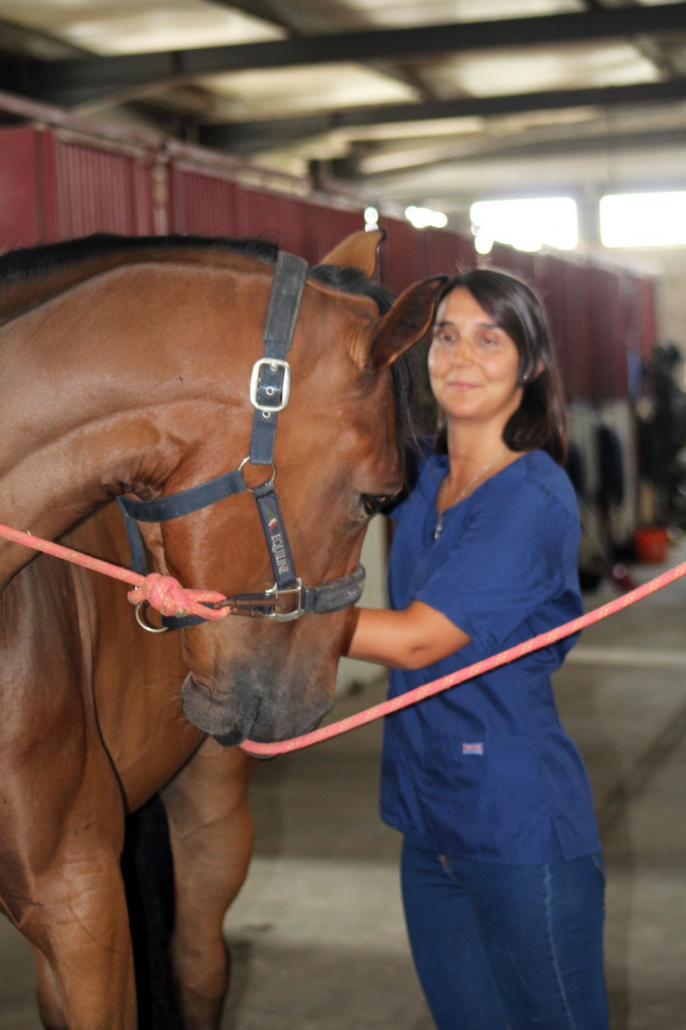
The Art of Balance
/in Blog, Portuguese Equestrian Heritage, Classical Equitation, Equestrian life in Portugal, Frontpage Article, Interviews - riders, breeders and related people/by Teresa BurtonTHE ART OF BALANCE
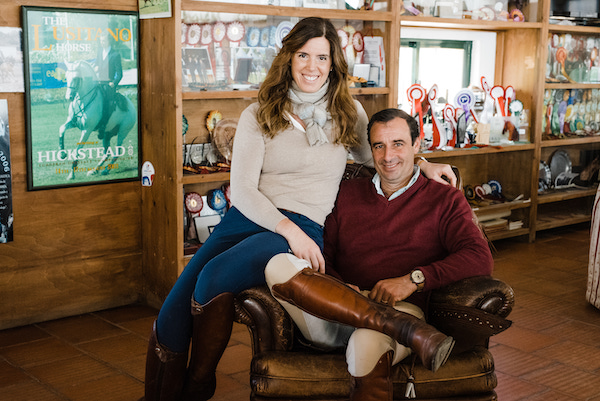
Text Therese Alhaug Photo Lena Saugen. Made in collaboration with Teresa Burton.
If you watched Rodrigo’s Olympic debut, you might remember how he played his way down the final line holding one hand on the reins. His big smile made it look easy and fun, making us curious to know more about this playfully yet technically solid duo. A chat that led us into The Art of Balance.
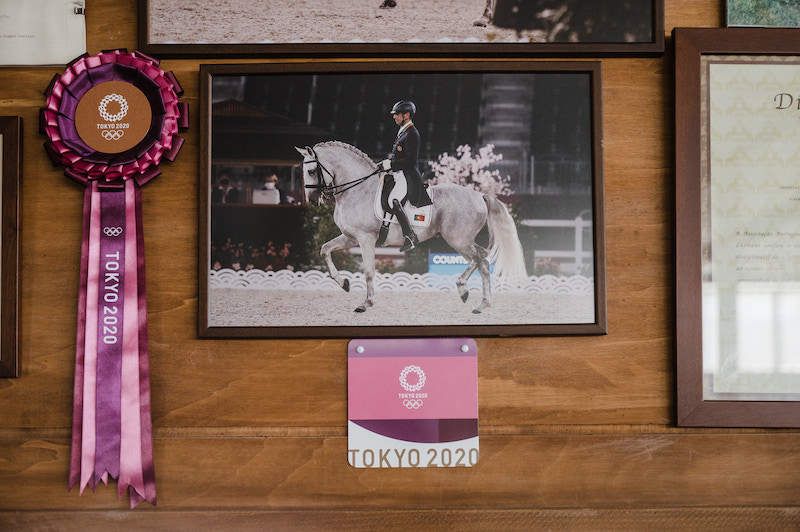
EQUILIFE and LUSITANO HERITAGE visited the Olympic debutant at his family farm in Alentejo, Portugal, where Rodrigo began his riding career working the farm cattle and competing in working equitation. A different background than most dressage riders. He early performed at equestrian events, including his favourite performance: riding without reins.
“In Tokyo, just before entering the freestyle, I told Rodrigo to have fun in the ring and reminded him that he was fortunate to have four reins to hold this time!” Rodrigo’s wife, Maria Amaral, says, laughing.
Maria has significantly influenced Rodrigo’s dressage career, being a successful Grand Prix rider herself. The two equally guide each other in the dressage arena.
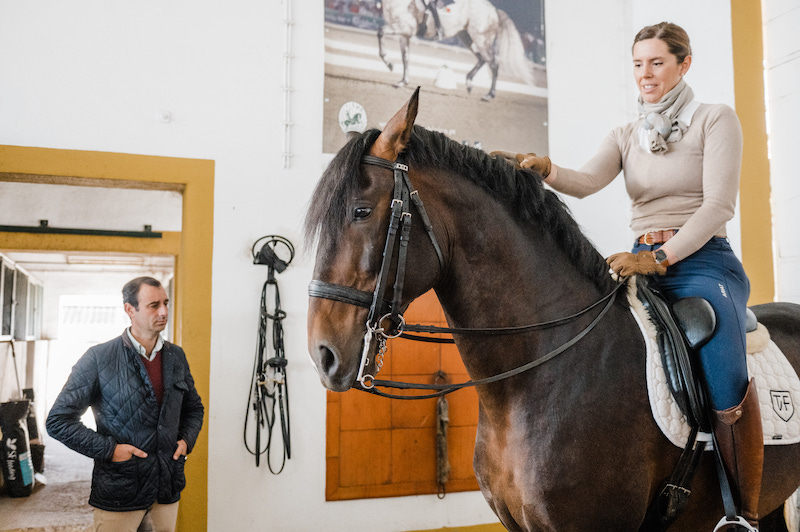
“Each horse has its natural balance, some more to the front and others more to the hind legs. This is something they are born with. So when you start training the horses, you have to look for this.”
Rodrigo Moura Torres
THE ART OF BALANCE
Rodrigo’s family has bred horses for a long time. They also produced Rodrigo’s Olympic partner, Fogoso.
“I know Fogoso inside out, which helped me a lot when we entered the arena in Tokyo,” Rodrigo says.
One of Rodrigo’s early masters, Mestre Joao Lopes Aleixo, taught him the importance of the seat to have balance and control and to give impulsion from behind; Create harmony with invisible aids. Still today, Rodrigo is working on this.
“When riding 2-3 km outside, moving the horse and the cattle, it requires the horses to be comfortable with me. They need to be straight, in the same rhythm, and very well balanced,” Rodrigo explains. “This is something I have tried to surge since the beginning of my career as a dressage rider.
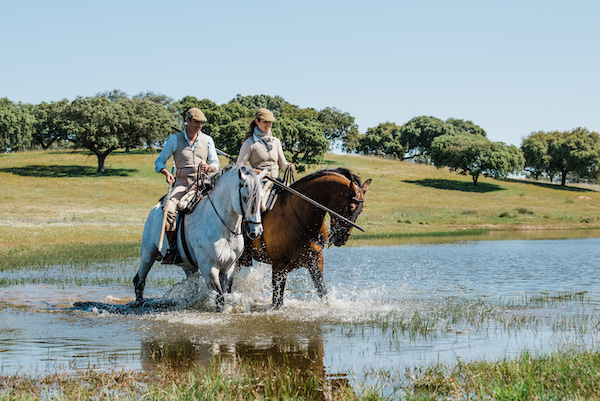
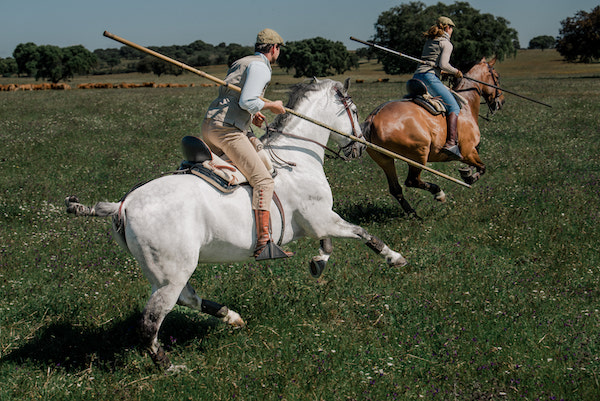
“When riding 2-3 km outside, moving the horse and the cattle, it requires the horses to be comfortable with me. They need to be straight, in the same rhythm, and very well balanced,” Rodrigo explains. “This is something I have tried to surge since the beginning of my career as a dressage rider.”
Rodrigo Moura Torres
Living in the middle of the countryside, Rodrigo’s father and grandfather used horses to move cattle, giving the horses the genetics to deal with pressure. The first horses were bred for bullfighting and then working equitation, but in the last ten years, they turned their eye to producing dressage horses. Rodrigo still uses his knowledge from the fields when working the youngsters.
“As a breeder, I work the horses since they are young. First, I must find the ideal balance for the horse in all gaits and exercises. I pay notice of this in the lunge already. Each horse has its natural balance, some more to the front and others more to the hind legs. This is something they are born with. So when you start training the horses, you have to look for this,” Rodrigo says, pointing out that each horse is different and has its different rhythm.
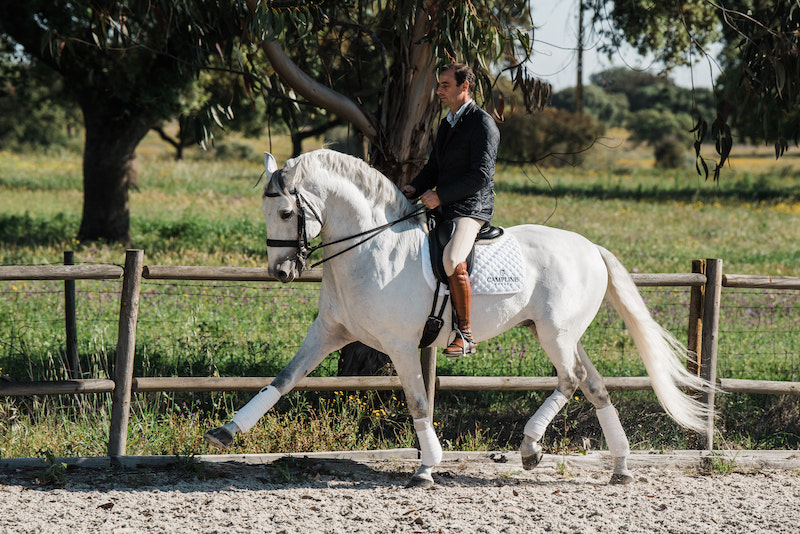
“Since Fogoso was four, he could already do everything. I could play with some piaffe and some passage. It was very easy for him because he was very well-balanced. He was already giving me everything, and I just took advantage of these natural things he gave me.”
Rodrigo Moura Torres
FINDING THE NATURAL BALANCE
We visit the farm on a crisp morning in spring. The horses are grassing in the sunrise on large fields dotted with colourful wildflowers and cork oak trees. A scenery that the family takes advantage of when riding out, allowing the horses to stretch and gallop alongside with the cows and horses in the fields.
Rodrigo’s dad, Carlos, has already started grooming the Olympic hero Fogoso, who’s now 12yo, for Rodrigo to ride.
The powerful stallion demonstrates the dressage evolution in the Torres family’s breeding strategy: a horse that loves competitions and rises to challenges confidently.
“At competitions, Fogoso truly shines. He loves being in the spotlight,” Rodrigo explains.
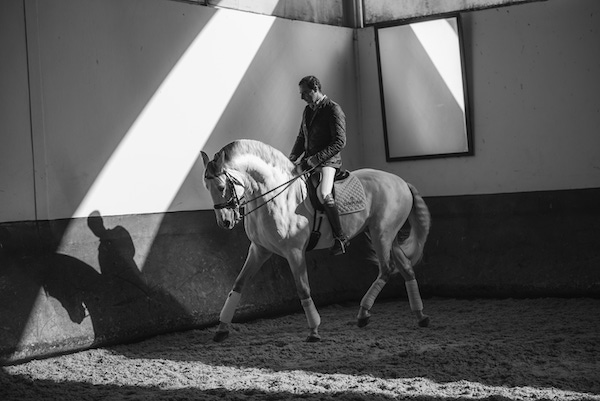
“Since Fogoso was four, he could already do everything. I could play with some piaffe and some passage. It was very easy for him because he was very well-balanced. He was already giving me everything, and I just took advantage of these natural things he gave me.”
The Lusitano breed is known for their natural talent for passage and piaffe due to their short and powerful physic. Something Rodrigo has in mind when training them.
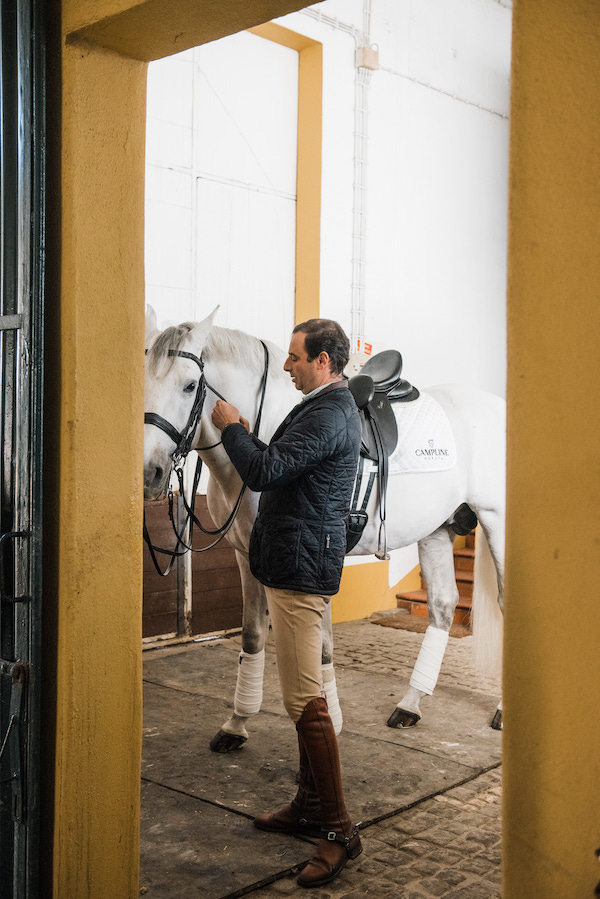
“When a horse is balanced & strong, and accepting my aids, I can ask nothing, and he will do everything.”
Talking about the breed, how do you implement the German training scale?
“The training scale is logical. I always try to go through the training scale, but when riding, you must feel what you must do at every moment. Sometimes you have to go back a little, then maybe two or three steps forward, then back again etc. Riding is not mechanical. You see; It’s the horses saying to me what I need to do. Not me.”
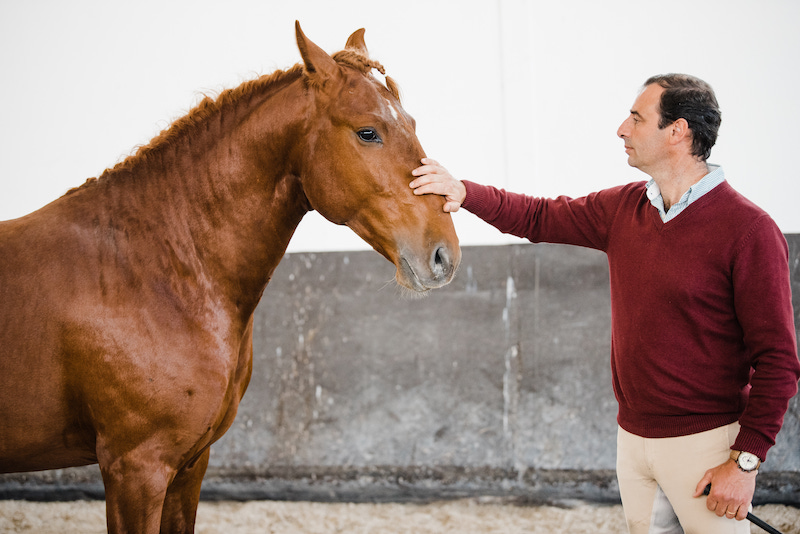
Rodrigo explains how Lusitanos naturally can be presented earlier to collected exercises.
“Some Lusitanos are already, as a 5-year-old ready for 3-4 steps in piaffe, because it is natural for them. I do this just for the horse to ‘feel it’. I never push them. I rather try to understand exactly what to do at every moment. This is my philosophy. Step by step, I give them more and more tasks, and step by step, they give me more and more in return.”
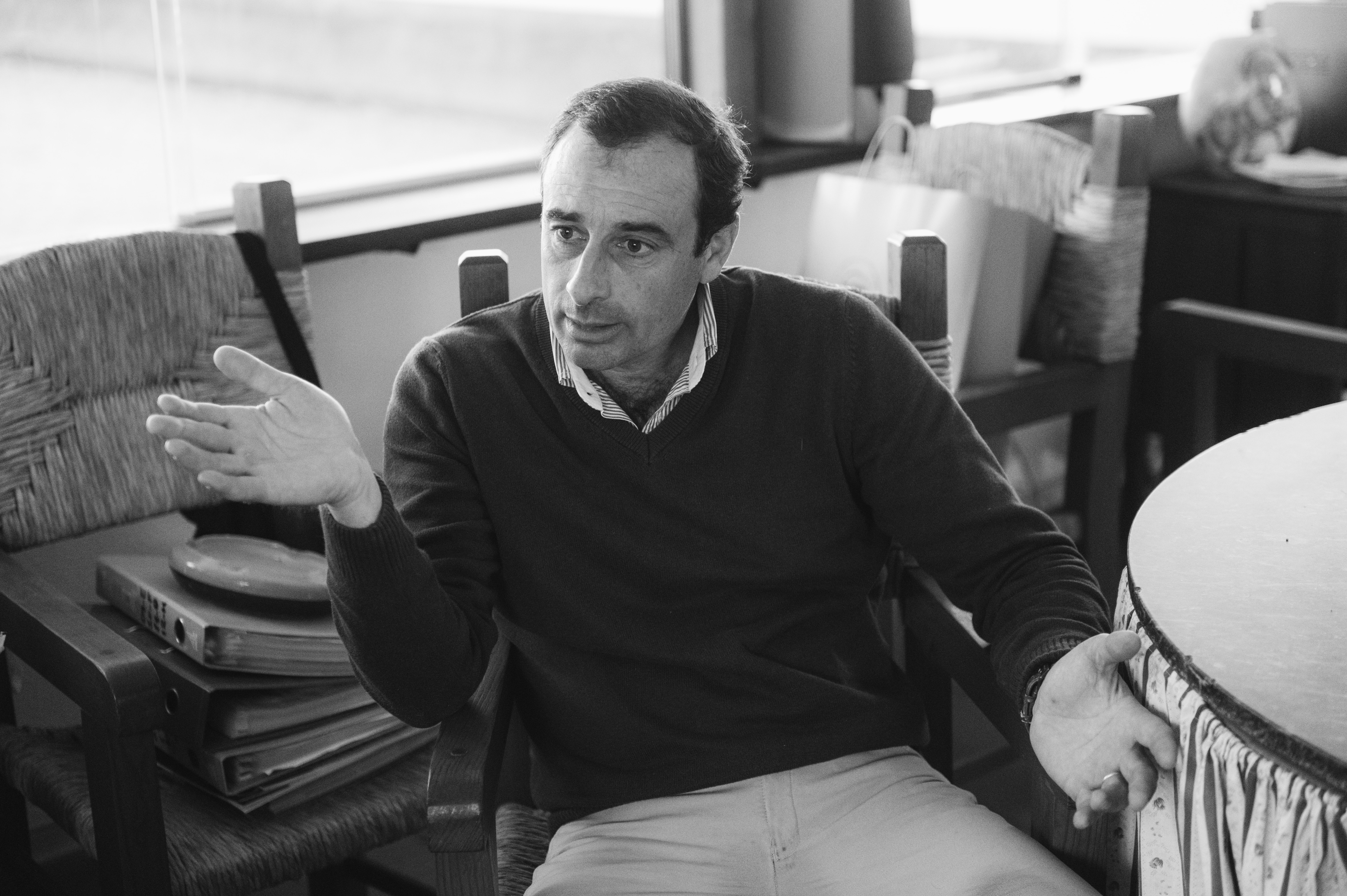
“When a horse is balanced & strong, and accepting my aids, I can ask nothing, and he will do everything.”
Rodrigo Moura Torres
Rodrigo puts his head up to demonstrate:
“If you see horses move naturally in freedom, they do so many difficult things. And they always keep their head up. So why should I sit on them and put their head down, destroying their natural balance? To make a horse improve, you need to keep him healthy. And for this, we need to understand the difference between the breeds.”
“We cannot go to full extension with a Lusitano when they are young, as this might ruin them. While a Lusitano might play with piaffe as a 5yo, my warmblood started passage when he was 8. So we must keep attention to their natural balance and ask what they have to offer.”
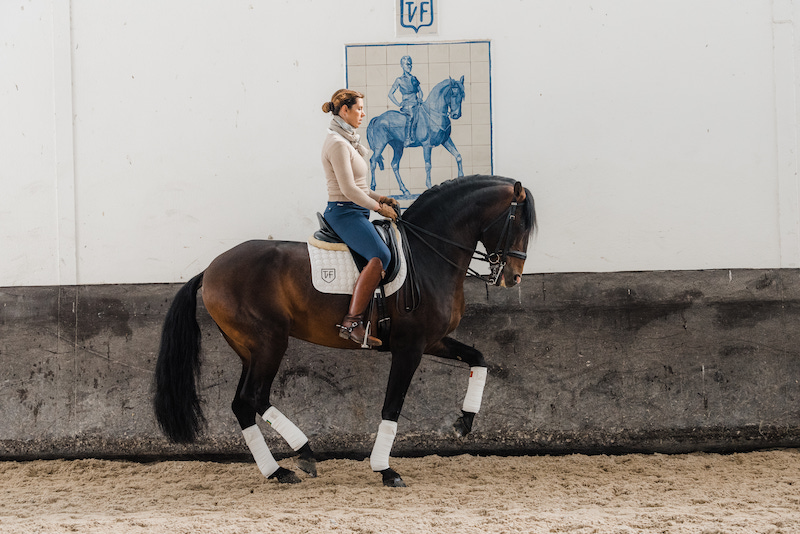
“The rider’s balance will be good if the horse can move in a good balance. You can sit still, and your legs don’t have to push. The horse will move through his back and into your hand.”
Rodrigo Moura Torres
He continues:
“Some Lusitanos can ruin their body if they go big before they are strong and on a higher level. To go forward is one thing but to push is another thing. You simply cannot force something they cannot deliver to you. Approximately 95% of the dressage horses today are warmbloods, so the training scale which is good itself – is based mainly on warmbloods. We need to keep that in mind and foster what they are good at. The things they are not so good at will come naturally when they become stronger
and more confident.”
Talking about balance, how would you describe a rider in balance?
“Many trainers say if the horse goes wrong, the rider is not sitting in a good way. I don’t believe this. The rider’s balance will be good if the horse can move in a good balance. You can sit still, and your legs don’t have to push. The horse will move through his back and into your hand.”
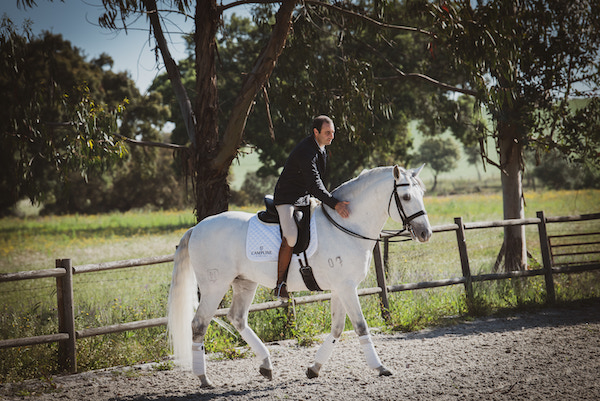
Maria adds:
“You might notice how Rodrigo is moving a bit up or forward when going into halt or piaffe. One of the judges in Tokyo even commented on this, that he fell a bit forward in the exercise, but it’s actually natural for him. He feels it will help the horse, and that in that moment it will loosens his back and support the balance.”
Rodrigo:
“If I keep the natural balance of the horse and the horse work in harmony, the midpoint is the rider, so I try to keep the center of his balance to where I am sitting. If I sit behind this center, the weight comes too much to the hind legs. The rider needs to be in self-carriage, as I don’t want to destroy the balance of the horse. As an example, the gravity of the pirouette should be where I am sitting.”
“If I keep the natural balance of the horse and the horse work in harmony, the midpoint is the rider, so I try to keep the center of his balance to where I am sitting.”
Rodrigo Moura Torres
Despite their achievements in the ring, the duo is not seen often at bigger shows. Rodrigo explains.
“My main goal is to keep Fogoso healthy and happy so we prefer shows close to home, as we don’t want to push him with travelling. Even as a youngster, we opted to only start competing when he turned 7 years old, and we only do 2-3 bigger competitions a year. The remaining time we keep him in his routine at home doing his normal horse life.”
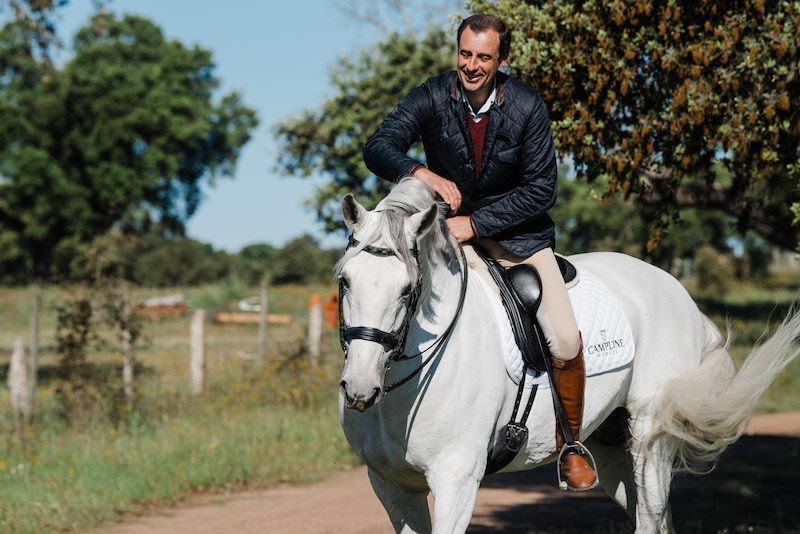
“The way I see it, show jumping is much more about business, which requires more travelling, while dressage, for many, is not so much about that. It’s more about making a name for yourself and delivering unique performances at the right stages. So we dont want to travel to the other side of the world if we dont have to.”
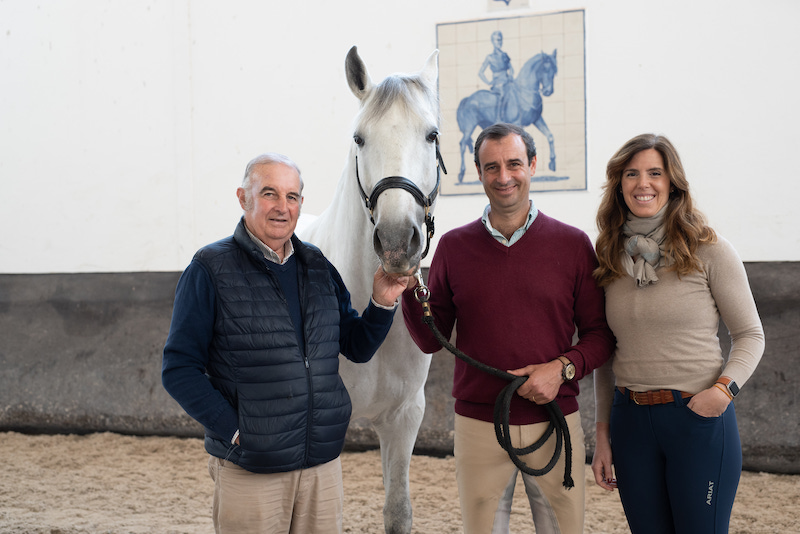
We want to thank the Torres family for having us over and Lusitano Horsefinder for collaboration with us to make this trip possible.
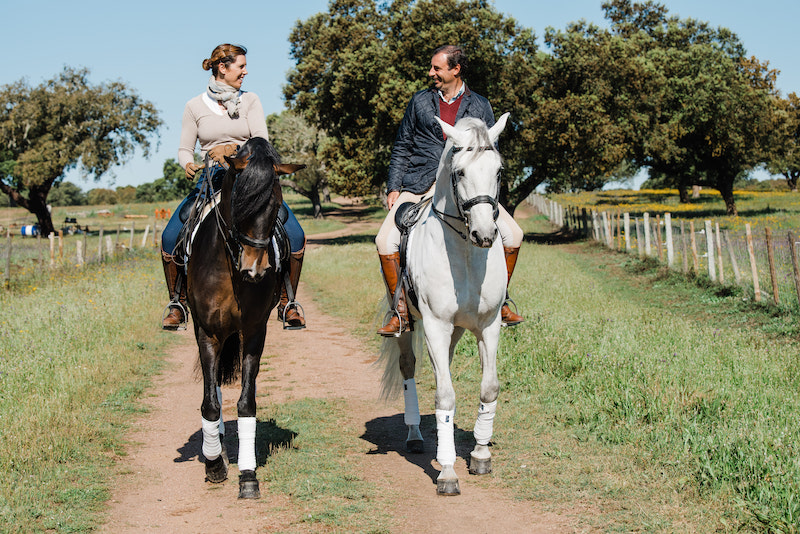
Key Pages
Supporting The Brooke Organisation
 Lusitano Horse Finder is proud to support The Brooke Organisation, an international animal welfare organisation dedicated to improving the lives of working horses, donkeys and mules in some of the world's poorest communities.
Lusitano Horse Finder is proud to support The Brooke Organisation, an international animal welfare organisation dedicated to improving the lives of working horses, donkeys and mules in some of the world's poorest communities.Get in Touch
Teresa Burton
Malveira, Portugal
Tel: + 351 913 175 772
E-mail: teresa@lusitanohorsefinder.com

